DAY 1
Flew from Istanbul Airport to Izmir Airport, then rented a car to head to Selçuk and visit the Roman Aqueduct in Selçuk.
I rented a car through an online platform, and GOLDCAR provided me with an MG SUV. The rental process was handled in the airport’s departure hall. To pick up the car, you need to exit the departure hall, take the elevator to the second floor, walk across the overpass, and then take the elevator down. The app for picking up and returning the car has helpful people who explain the process in detail, so there’s no need to worry too much.
This was my first time renting a car in Turkey, and here are some tips I learned:
- Insurance: I recommend buying insurance from the local rental company. It’s cheaper and makes handling accidents easier. I had a minor scrape next to the right taillight. I thought having full coverage from back home would make things easier, but the insurance folks didn’t know much. Luckily, a friend in Turkey helped me sort it out through WhatsApp with the rental company.
- Car Handover: Always start the car and take photos right when you get it. Note the fuel level and preferably write it in the contract. When returning the car, take photos and include them in the inspection report. I got a full tank (showing 570 km range) and refueled before returning it (showing 610 km range). But the rental company emailed me asking for 324.58 TRY for extra fuel because I didn’t take photos when returning the car. I ended up losing out.
- Hotel Choice: When driving, choose hotels close to the road and with easy parking. In Selçuk, I inexperiencedly booked a guesthouse in the old town, and the narrow streets ended up scratching my car.
- Driving Style: In Turkey, everyone drives like they’re racing (no turn signals, flooring the gas). Overtaking on curves and motorcycles speeding at 130 km/h are common. Drive in the right slow lane, especially on one-way roads. Some drivers might honk to hurry you up, but just let them pass. Don’t panic; if you get stressed, you might end up in an accident, and they won’t take responsibility.
- D400 Road: A few times on the D400 highway going into tunnels, my polarized sunglasses made everything super dark. Be careful not to wear sunglasses on the D400. The scenery is beautiful, but the mountain roads have a lot of twists and turns, and Turkish drivers are fast. Always stay alert. During my 5-day road trip, I saw 3 accidents, so be really cautious.
Originally planned to visit the Izmir Museum and the Izmir Ancient Roman Market Archaeological Site, but ended up driving into Izmir’s old town. The streets there are super narrow, with a lot of traffic, and there’s a 45-degree slope that requires you to floor the gas pedal. After driving around for a bit, I decided to give up and headed straight to Selçuk.
After dropping off my luggage at the guesthouse, I went straight to St. John’s Church. But after 5 PM, the Ayasuluk Castle behind the church was closed, so I plan to visit it first thing tomorrow morning. On the way to the church, the Selçuk Roman Aqueduct is lined with local restaurants and supermarkets, making it easy to shop and recharge.


Staying hydrated is key when traveling. In Turkey, the price of drinking water can really vary. At the Topkapi area in Istanbul, a 500ml bottle costs 20 lira. At regular newsstands, it’s 20 lira for 1.5 liters. But at SOK supermarkets, you can get 1.5 liters for just 6.5 lira. Of course, there are also pricier bottled waters that cost around ten-something lira. SOK supermarkets seem to have the best prices, and I buy salty yogurt here every day.
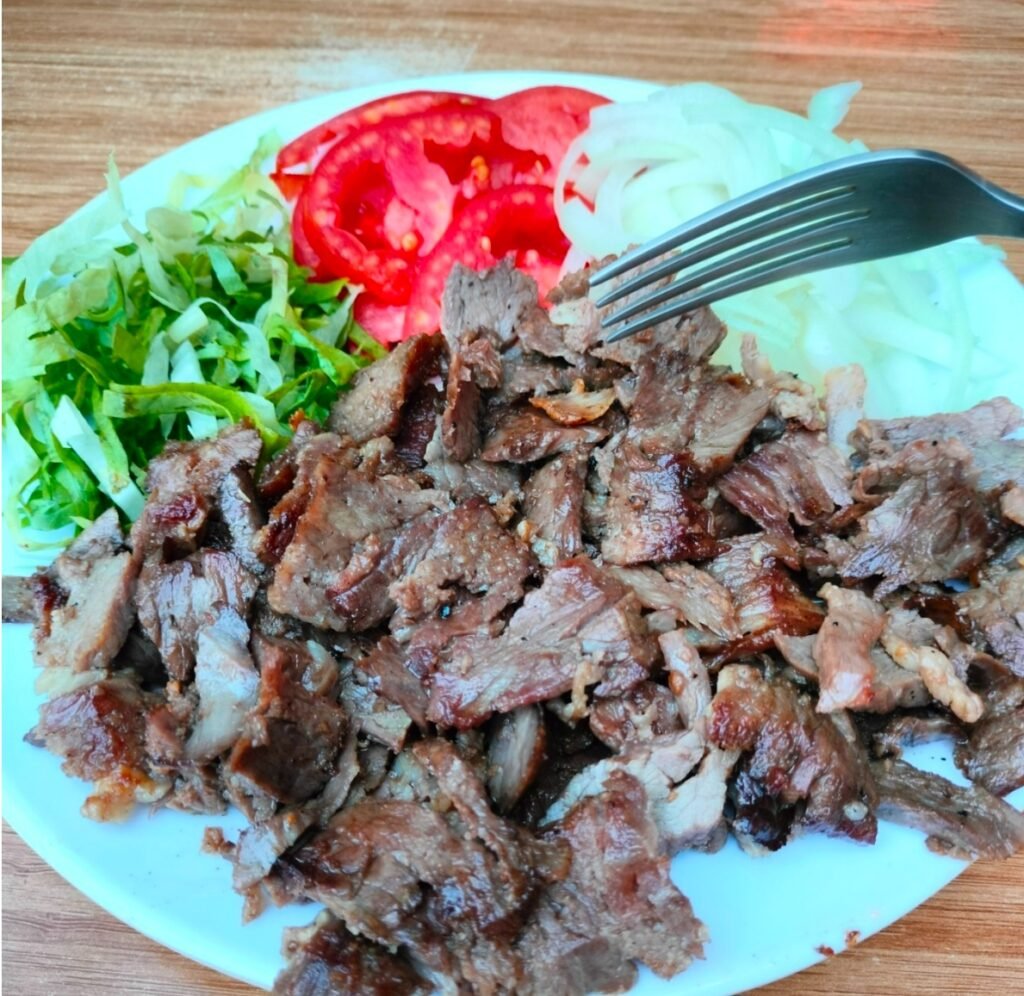
Grilled Beef Slices I Had That Day
DAY 2
Selçuk — Ortaca
Today’s itinerary: St. John’s Church, Ayasuluk Castle, Ephesus Archaeological Museum, Temple of Artemis, Ephesus, Miletus
Starting today, it’s a journey along the Aegean coast exploring ancient Greek and Roman city-states, which is the main part of my trip. The names mentioned in books like Smyrna, Ephesus, Miletus, and Asia Minor have become real-life ruins right before my eyes—it’s pretty awesome.
Having a car means I can go wherever I want whenever I want. By around 3 or 4 PM, I book the hotel for the night through Agoda, which helps me manage my schedule. Each site takes about 1 to 1.5 hours to explore, and I spend about 3 to 4 hours driving each day.
Went to St. John’s Church bright and early.

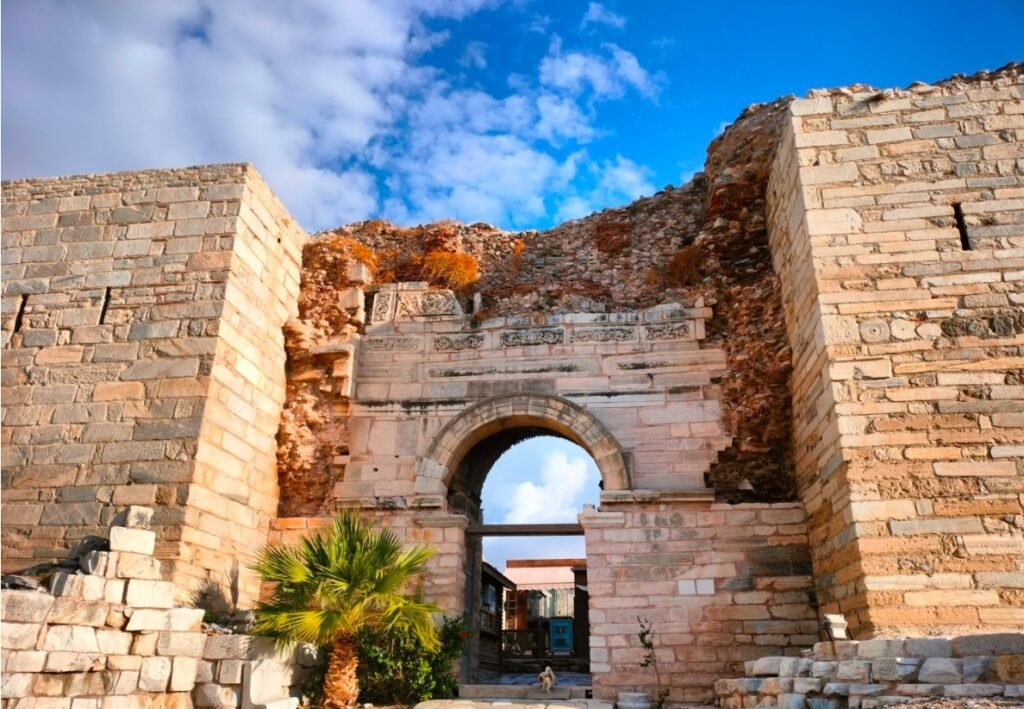
St. John’s tomb—he was Jesus’ favorite disciple and moved to Ephesus with Mary after Jesus was executed. He’s also one of the few saints who lived a long and good life.
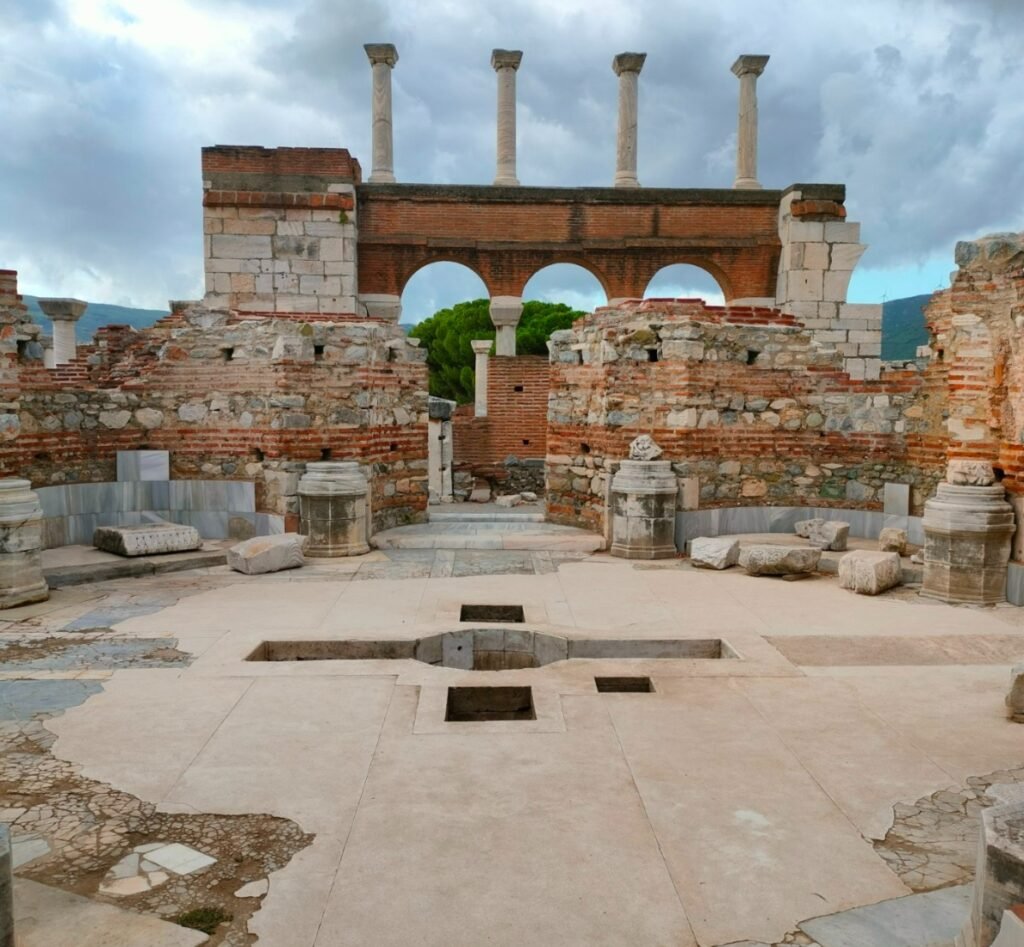
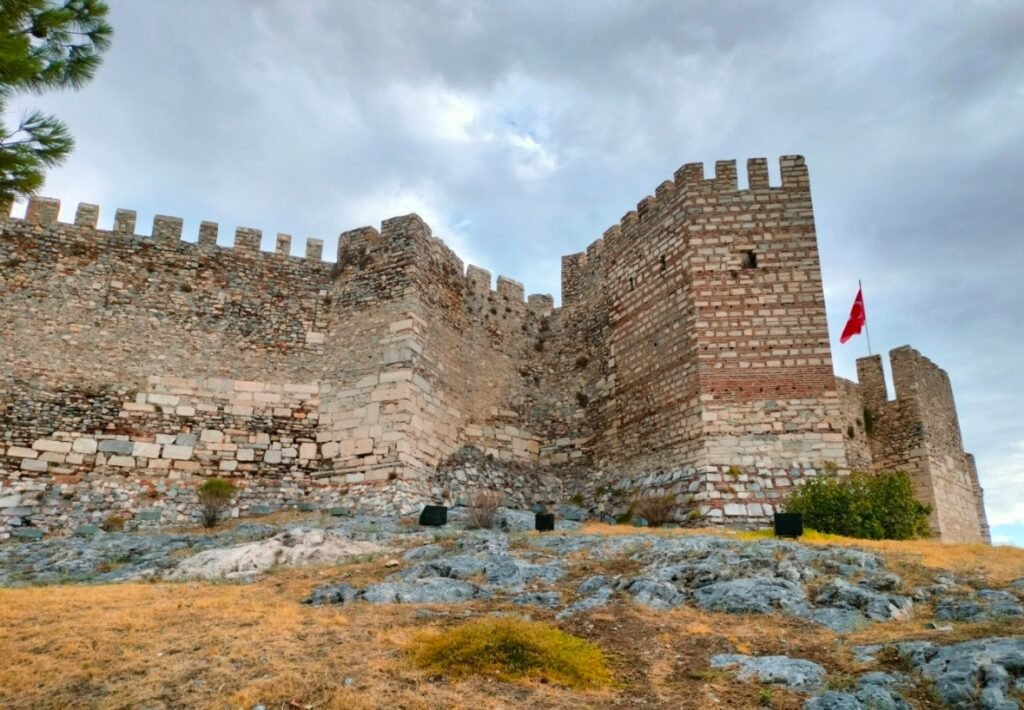
Continuing up from behind the church is Ayasuluk Castle, a building that dates back to the Roman era. Because I arrived early, most of the time I was the only tourist wandering around. It felt a bit like exploring ruins in “Uncharted.”


After checking out the castle, I headed over to the nearby Ephesus Archaeological Museum, where most of the artifacts from Ephesus are kept. The photo below shows a statue of the goddess Artemis, which was popular in Asia Minor. You can find a lot of these styles in Italy too—I saw similar ones at the Quintius Villa and the Especific Villa back in the day.
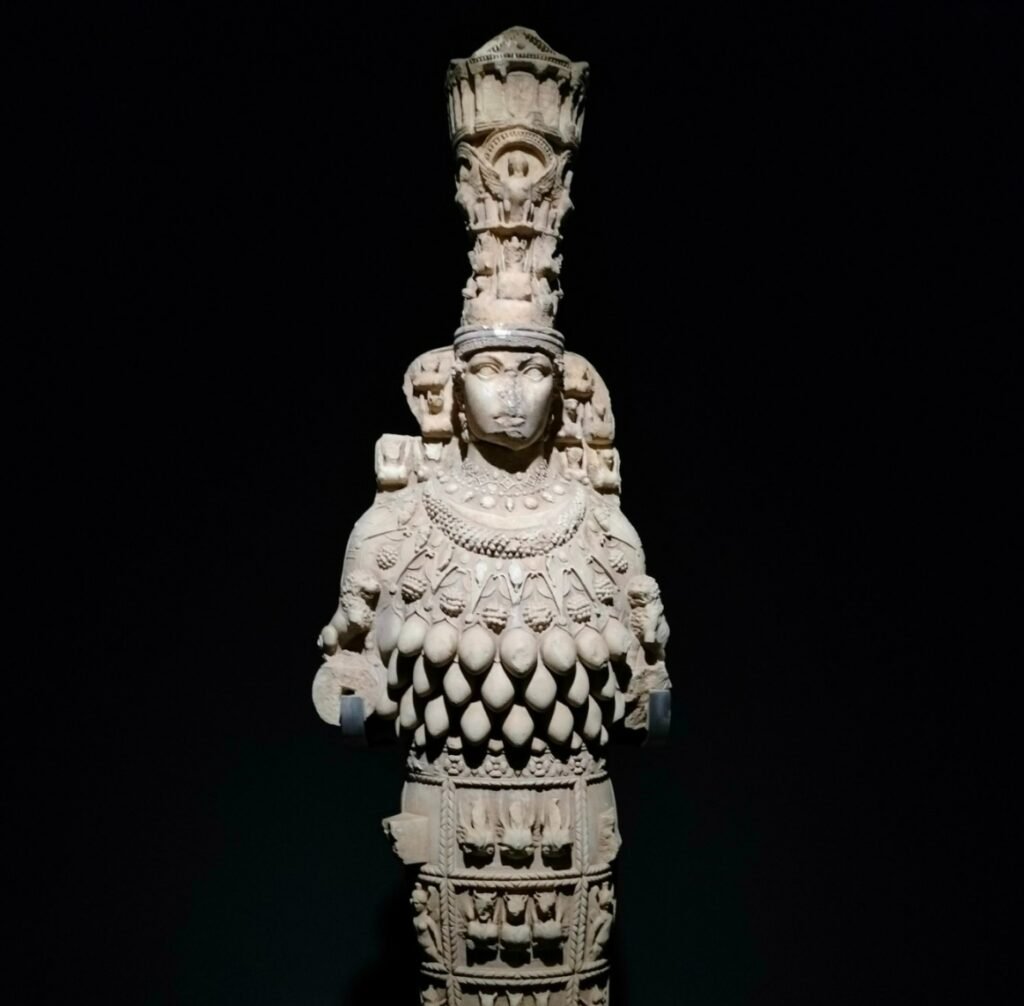

The Temple of Artemis, one of the Seven Wonders of the Ancient World, now only has one column left.
Driving to Ephesus, it took a full half hour just to get into the parking lot. As the capital of the Roman Empire’s Asia Minor province, it’s so famous and attracts tons of tourists. So if you want to visit, I recommend getting there first thing in the morning.
The famous Library of Celsus is surrounded by tourists, so everyone takes pictures from the bottom up. It’s pretty intricate and beautiful.


Inside Ephesus, there’s another ticket, but since I had a pass, I went right in. It’s like the houses where rich people lived during Roman times, full of murals and mosaic floor decorations.

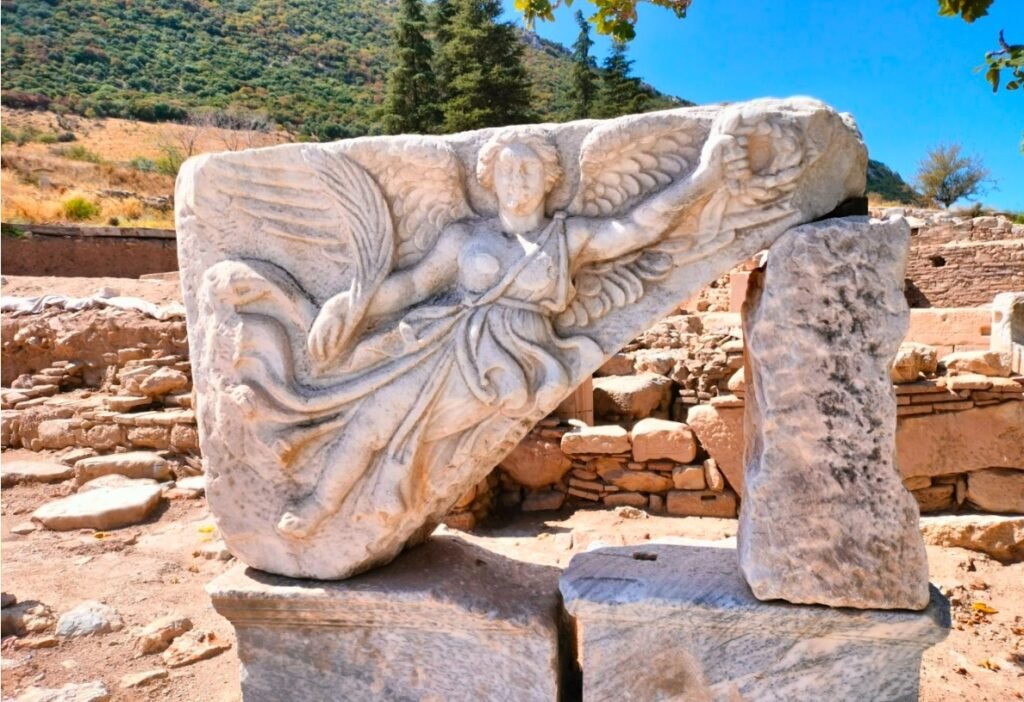
In the afternoon, I drove to see Miletus because the tyrant of Miletus revolted against the Persians, sparking the famous Ionian Revolt. A special tip: when abroad, you gotta use Google Maps. I used a map app from back home and drove into a cotton field. Later, I found out that Lonely Planet specifically mentioned the large cotton fields surrounding Miletus.

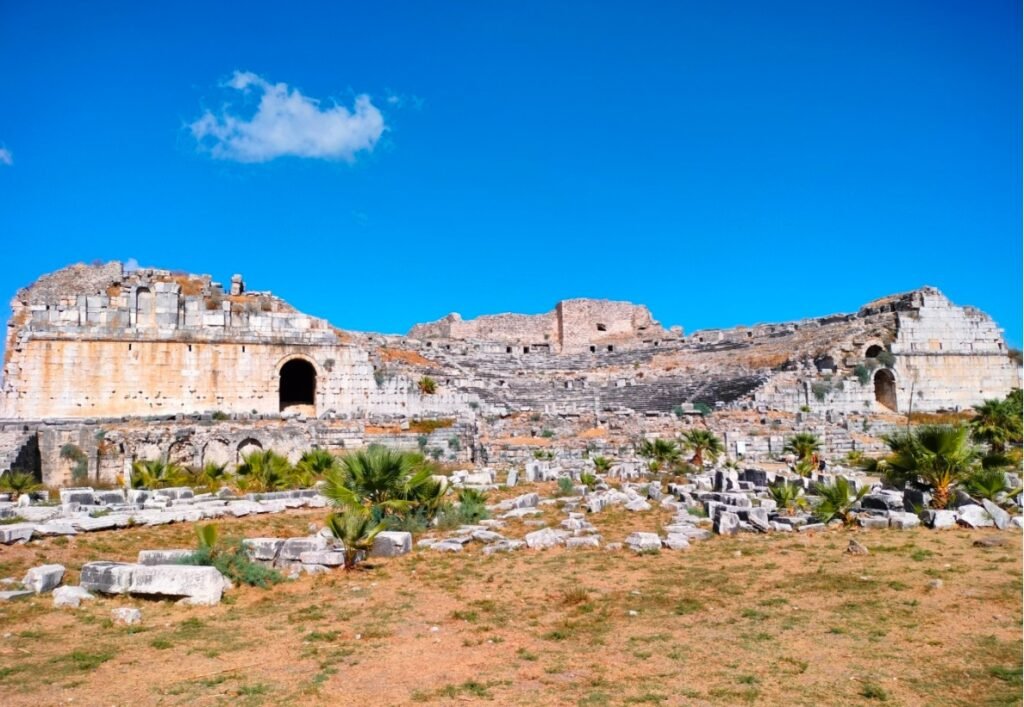
The theater in Miletus is just as big as the popular Aspendos Theater. The only issue is that getting there is kinda difficult.

After touring Miletus, I booked a guesthouse in Ortaca. At 8 o’clock, there was only one small shop open on the street. I had a simple cheese and bacon pie, and the owner was super friendly and offered me some black tea.
DAY 3
Ortaca — Kas
Today’s itinerary: Ortaca Police Station, Sansos Leighton, Patara, D400 Highway
Early in the morning, I noticed a scratch on the front right light of my car. I wasn’t sure when it happened, so I asked the host to call the traffic police. The police said that since the accident didn’t happen in their area, they couldn’t issue a report. However, the rental company required an official police report for insurance claims. My Turkish host doesn’t speak English, but he called his son for help. I told him I needed to go to the police station, and he gave me the name of the station. Using Google Maps, I drove there, and the police officers were super friendly as soon as they saw me. A guy who seemed like the police chief spoke some English and asked if my car was stolen. Once they knew I needed a report, they quickly sent two officers to inspect the scratch, take photos, and issue the report smoothly. While making the report, they chatted with me and asked if I was enjoying my time in Turkey. I told them that the Turkish people I met were all really friendly and that I was having a great time traveling. It was a heartwarming experience with the Turkish police.
The gas stations here have brands like Shell, BP, and one with a fire-breathing dog logo. I filled up at Shell the entire time. At the Shell station, if you tell the attendant “BENZI TANK FULL,” they know to fill up the gas. Many Shell convenience stores have seating and charging ports. You can grab a sandwich and a coffee and take a comfortable break. They also offer car wash services—some let you use a spray gun yourself for 25 lira, or you can pay the attendant 25 lira, and they’ll give you a game coin to use the spray gun. Others have automatic washes for 140 lira, where they give you a QR code. I couldn’t figure it out, so I asked the attendant to help me. I just drove the car into the machine’s tunnel, and it took care of the rest. Plus, the bathrooms are all free.
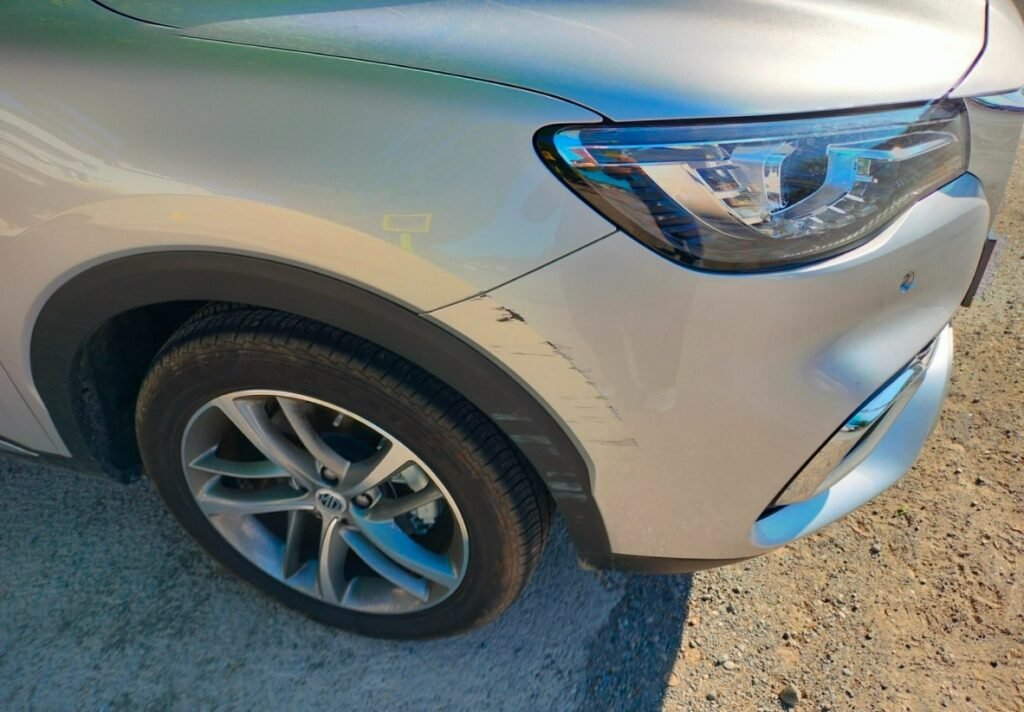

After sorting out the car issue in the morning, I didn’t waste any time and headed straight to Sansos Leighton. This place is a key city-state in the Lycian League. During the Roman Republic, it backed Caesar’s side. After Caesar was killed, Brutus’s army laid siege, and the whole city refused to surrender, with everyone taking their own lives. Such a unique spot—originally a bustling port city, now surrounded by farmland. It really shows how much things can change over time.
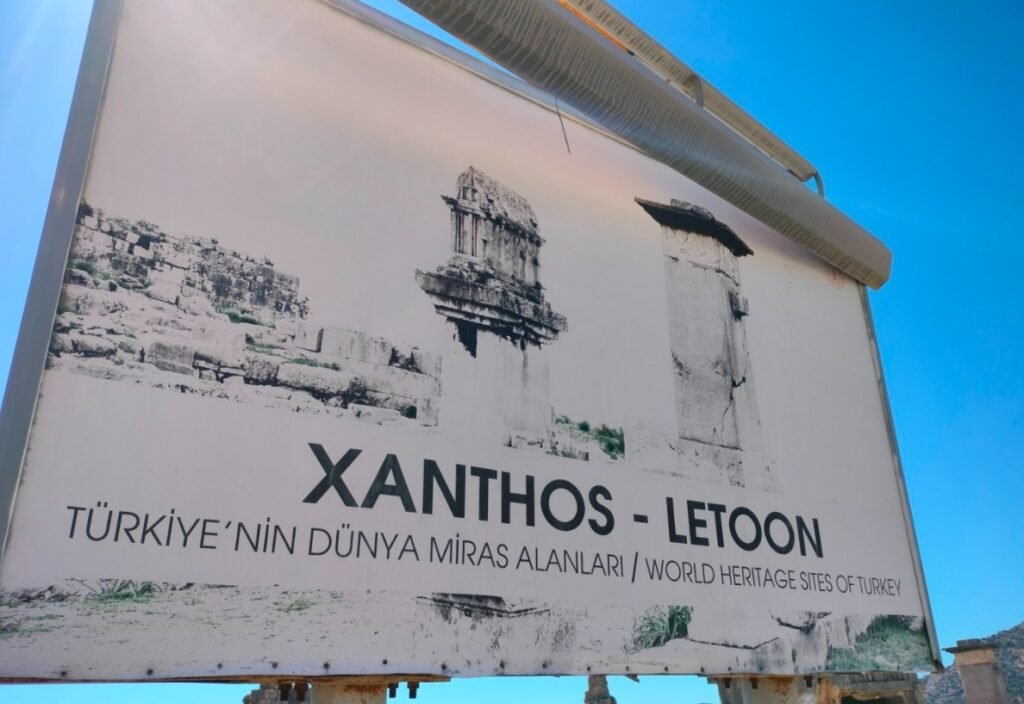
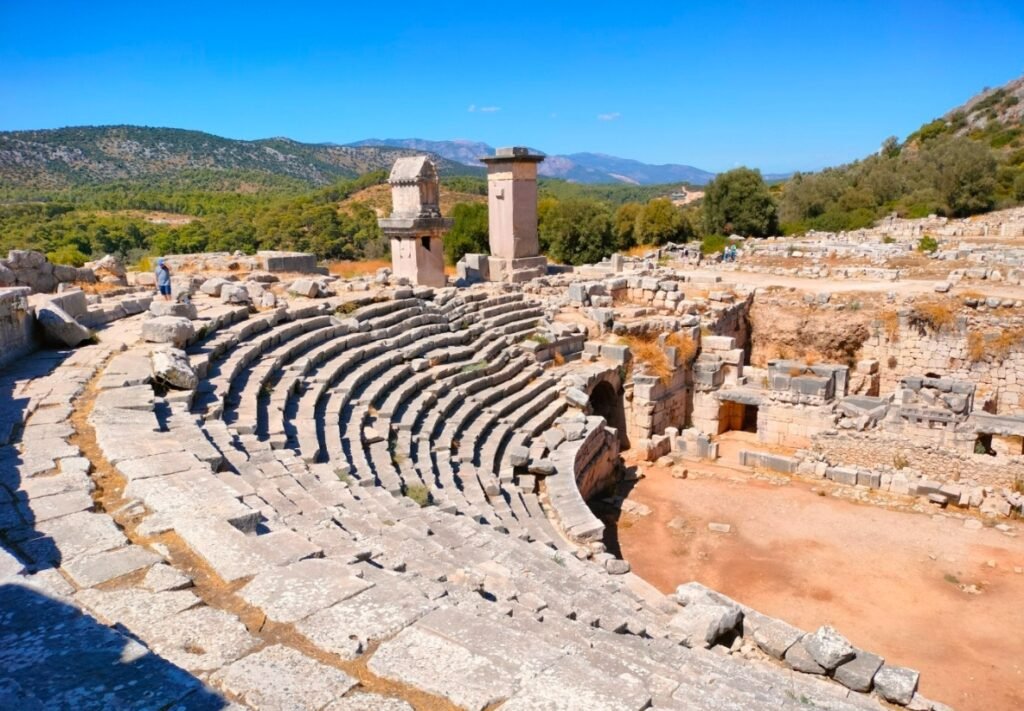
The theater in Sansos is impressive. It seems like every Greek city-state left their biggest relic as a theater.
Leaving the theater, there’s a wide avenue that leads up to the top of Sansos city. Curious about what was up there, I decided to climb. Along the way, I saw some stone coffins and remnants of the city walls. At the top, it looked like there was a weather station or something, so I didn’t explore further and headed back down the same way.
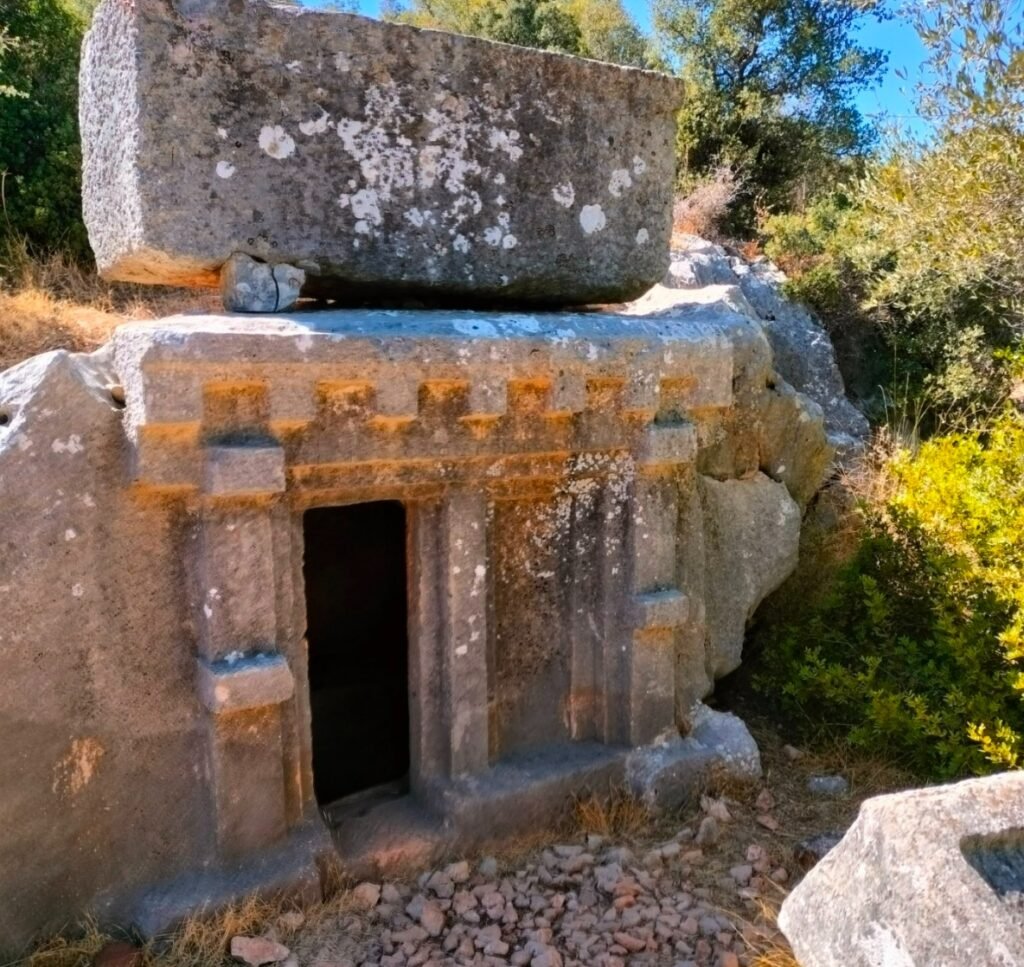
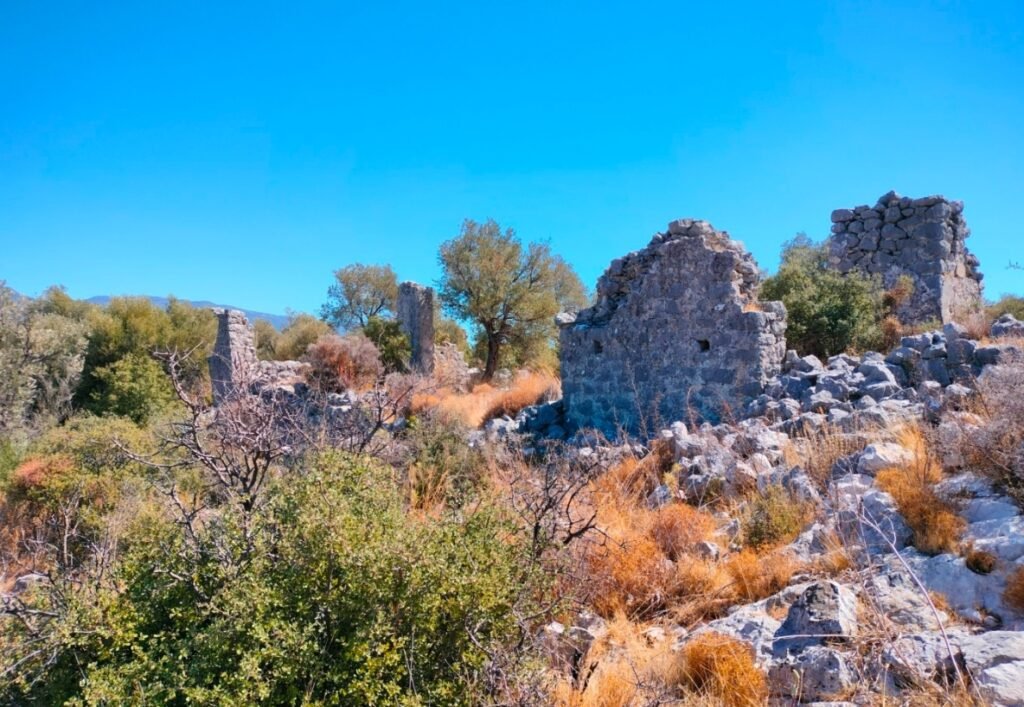
After Sansos, I made my way to Patara, another ancient Greek coastal city. It’s pretty large but still not fully developed. A standout feature here is the Lycian League agreement carved into stone pillars, brought together by Roman Emperor Nero. The ancient buildings where these agreements were made have been beautifully restored by the Turkish State Archaeological Institution.

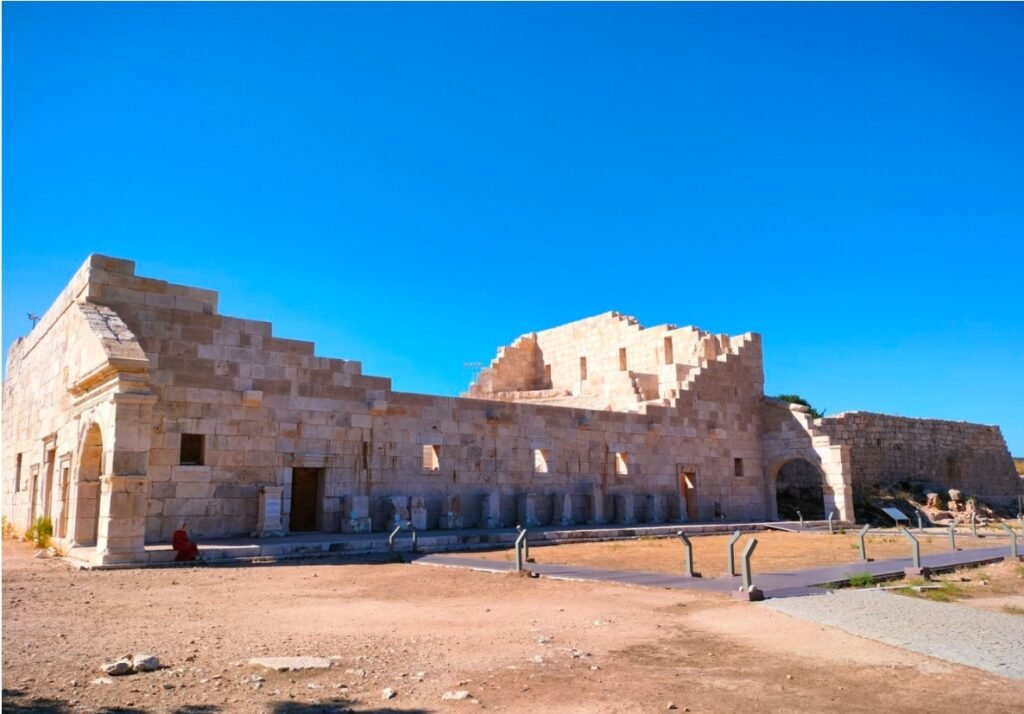
After visiting both sites, I drove through the most stunning part of the D400 near Kas. The scenery was breathtaking, but driving on the D400 was challenging with all the sharp turns that required full concentration. I booked a guesthouse called Likya Sup Apart, and it was beautifully decorated—clearly, the owner put a lot of thought into it. The best part about staying here was the nearby large pebble beach, just a short walk away, where I enjoyed the peaceful beach views. The downside was that the guesthouse’s toilet was broken, so I had to use a kettle to pour water for flushing. The owner is Turkish, and the hostess is an upbeat Russian girl who enthusiastically recommended a nearby beach spot for grilled fish, mentioning that the fish there have been ritually prepared by an imam and are super clean. It was the most relaxing part of the trip—lying on a beach chair with a cool sea breeze, listening to Turkish songs, and waiting for the sunset.
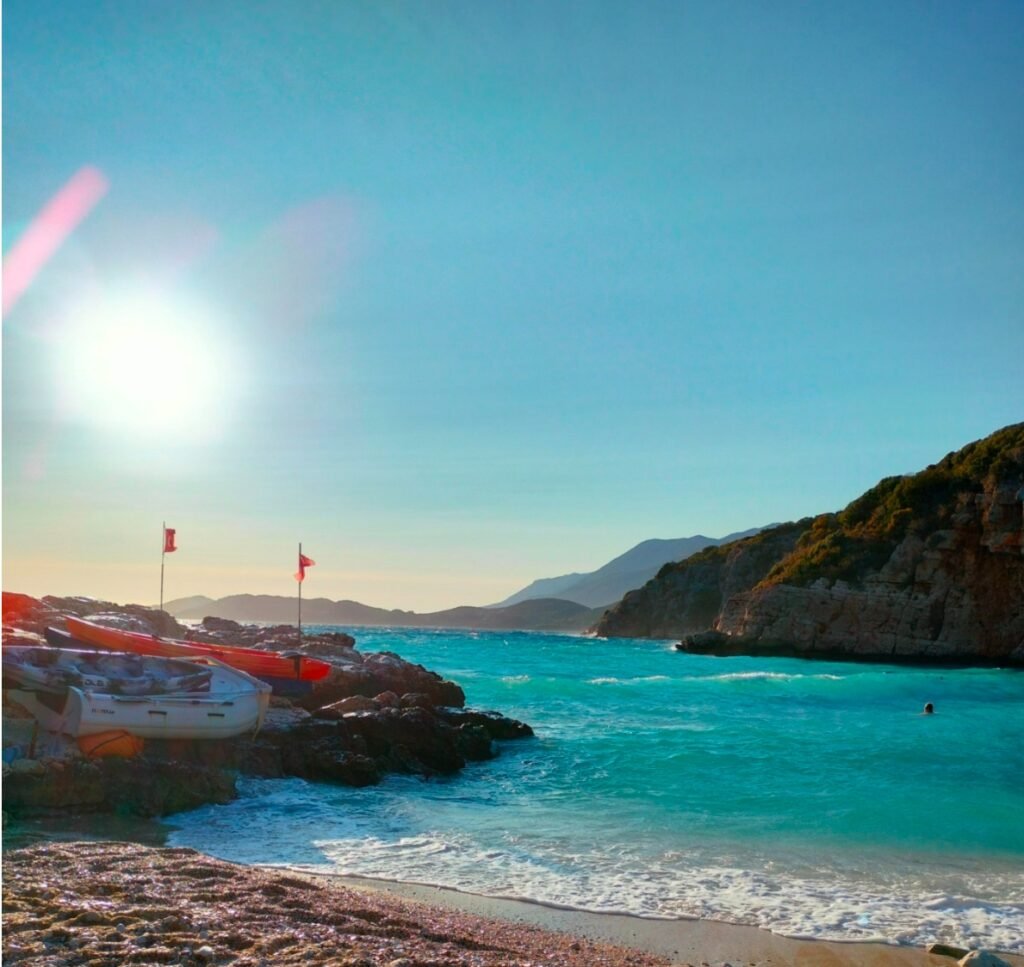
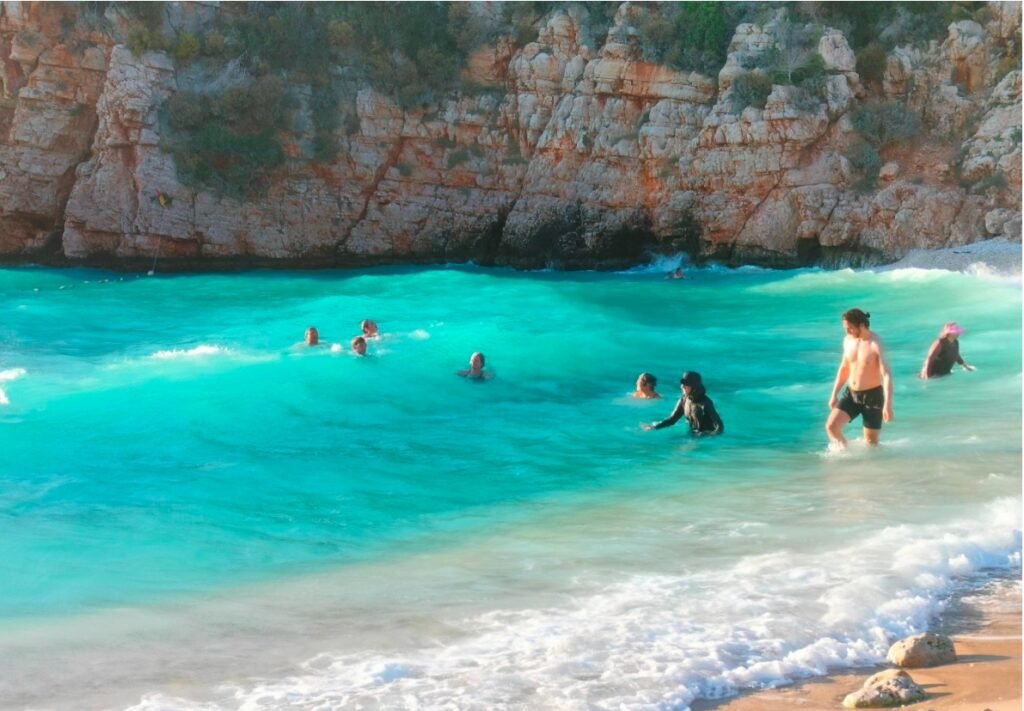
It was pretty windy that day, making the waves really rough. I was just soaking my feet in the water, and even though I swim every week, I didn’t dare go into the sea alone. A lot of tourists who love the waves were fearlessly swimming out into the surf one after another.
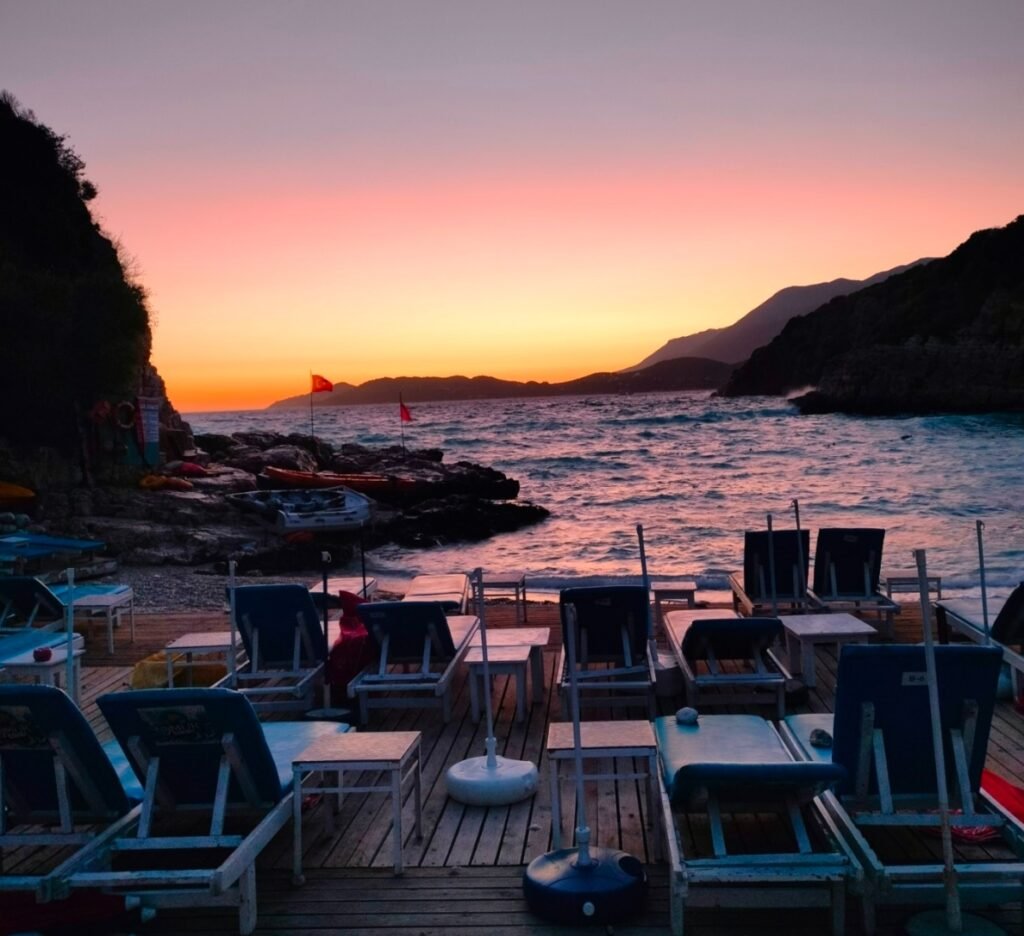

The menu had two types of fish, so I asked the server which one was tastier. He went into the kitchen and came back after a bit to tell me which fish was fresh that day. I said to just go with his recommendation and ordered the grilled fish for 500 lira—it was incredibly fresh and delicious.
DAY 4
Kas — Kalkan — Antalya
Today’s itinerary: St. Nicholas Church, Myra Ancient City, Phaselis, Antalya Museum, Antalya Hadrian’s Gate
Started the day by continuing on the D400 highway. On the map, there’s a big bend near Kale, and the sea view here is absolutely stunning.
The island across the sea looks like Kekova Island, which is an underwater ancient site. This time, I didn’t plan a day trip to hop between islands, so that’s something to look forward to next time.
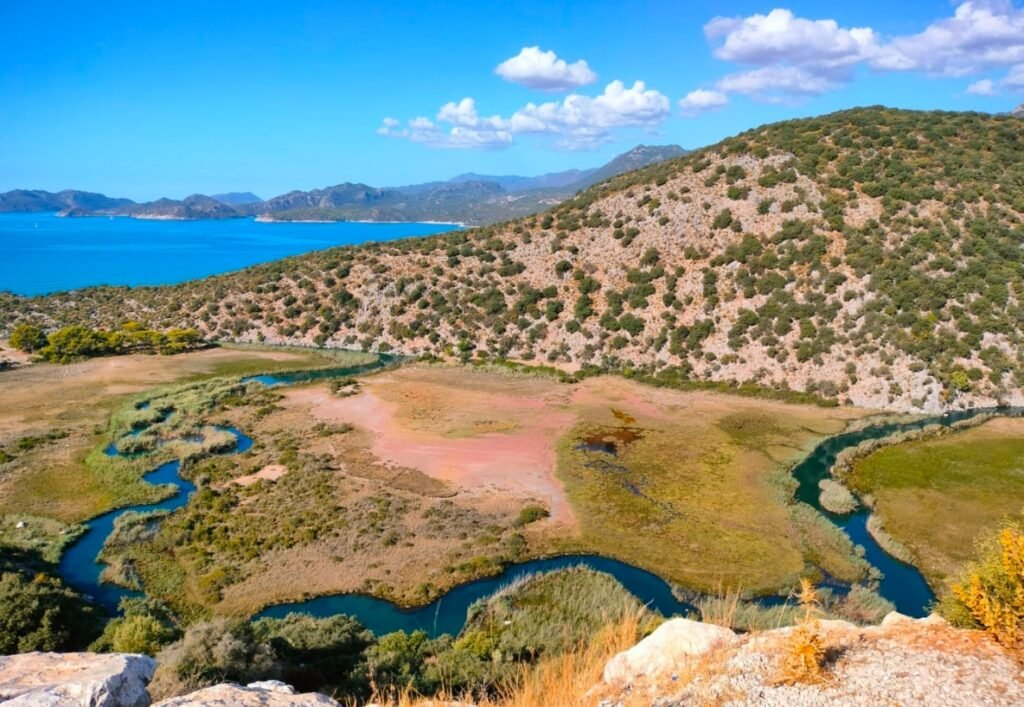
At the parking lot for St. Nicholas Church, there were lots of Russian tour groups. Apparently, the Russian Tsars once funded the restoration of the church, so many of the guided tours here are in Russian.

St. Nicholas’s tomb—the remains were stolen by Italians and taken to Bari, Italy. Only a few remains are kept at the Antalya Museum. St. Nicholas is actually the original model for Santa Claus, and here he’s depicted as a slim guy carrying a gift bag, which is totally different from the chubby image we’re used to.
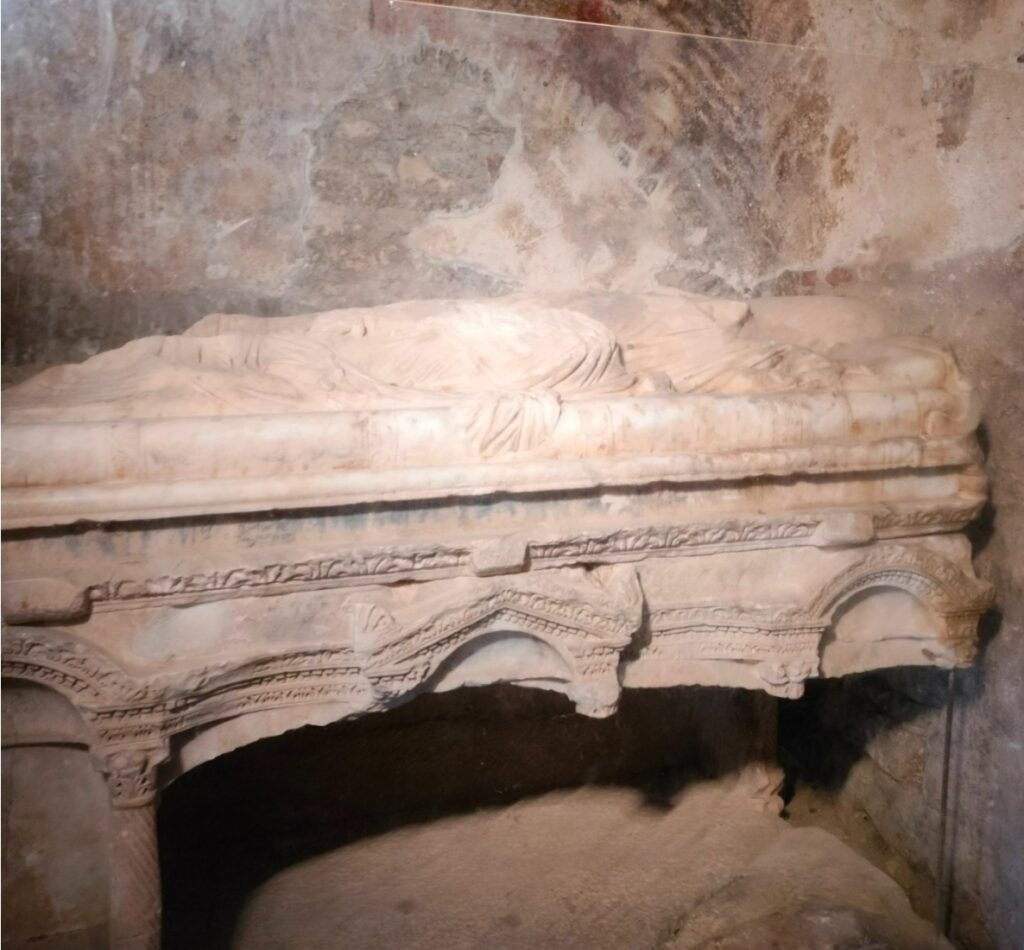
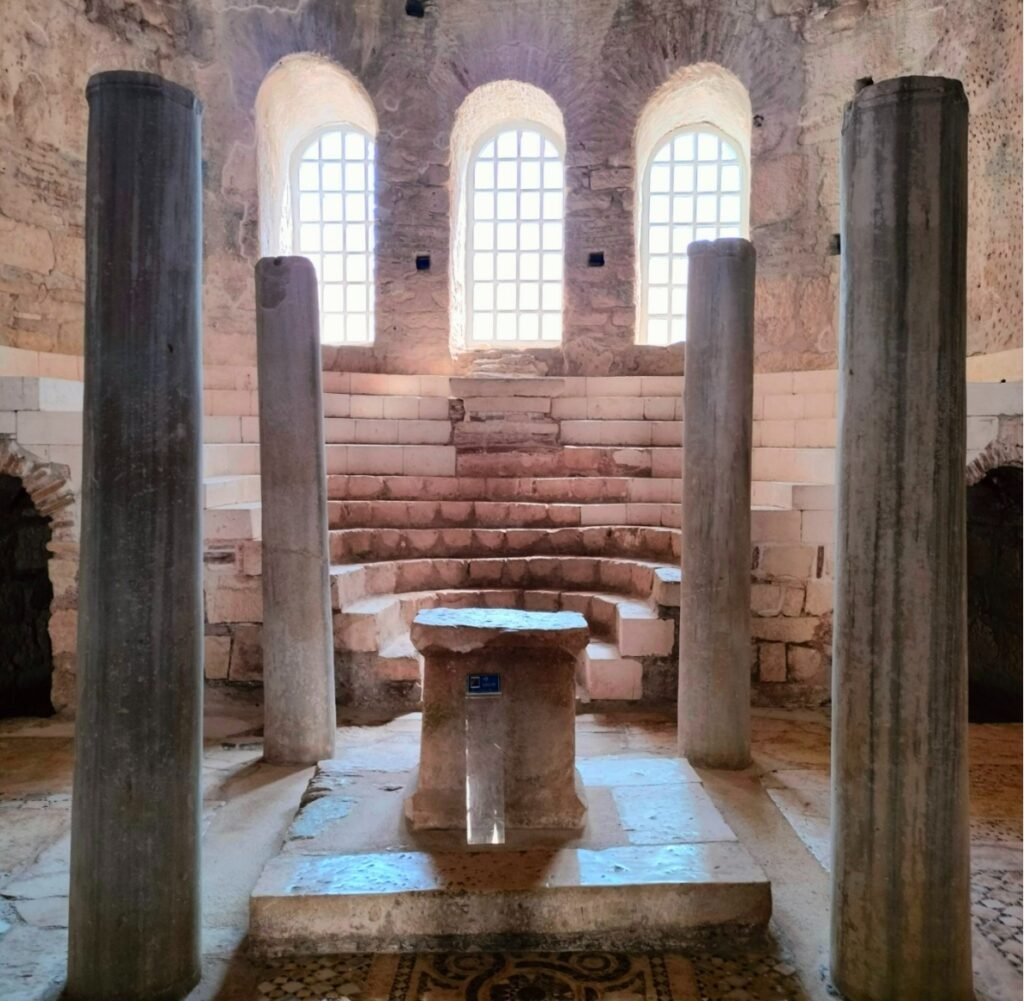
Russians here are really devout. Many visitors come in tears, holding photos of the saint, kissing them, and sticking the photos on the glass in front of St. Nicholas’s tomb.
The pass is valid, but the audio guide costs 350 lira. The numbers in the audio guide don’t match the actual signs, so it didn’t work well at all—I don’t recommend it. When I entered the church, they lent me a pair of wired headphones, but when I returned them at the ticket office, they gave me Bluetooth ones instead. Not sure if the 350 lira was worth it.
Not far from St. Nicholas Church is the ancient city of Myra. It’s famous for its sarcophagi. There are a lot of them along the Lycian League area, but they’re more concentrated here and look really nice.


After leaving Myra Ancient City, headed towards Antalya. Stopped at a roadside rest area for lunch around noon. There wasn’t much to choose from, so I grabbed a cheese and oil flatbread with a not-so-authentic cup of apple tea. The owner initially quoted 140 lira but only charged me 120 because the flatbread was smaller, so I got a discount.

Arrived at Phaselis, which is both an archaeological site and a local beach. Archaeologists were working on-site while people enjoyed the beach, and everything was pretty chill.

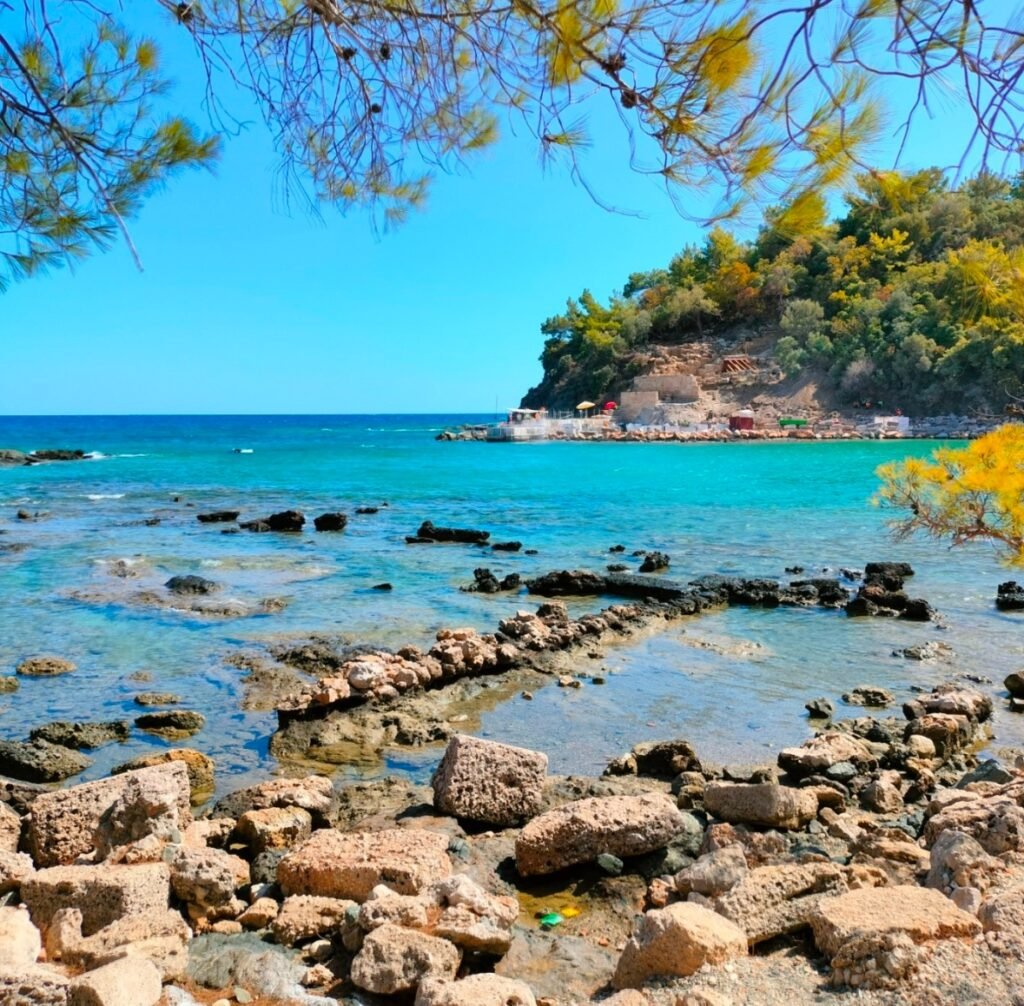

Phaselis Hadrian’s Gate—the Lycian League’s Hadrian’s granary and gates are everywhere. Hadrian must be a huge fan of Greek culture because he loves running around here.
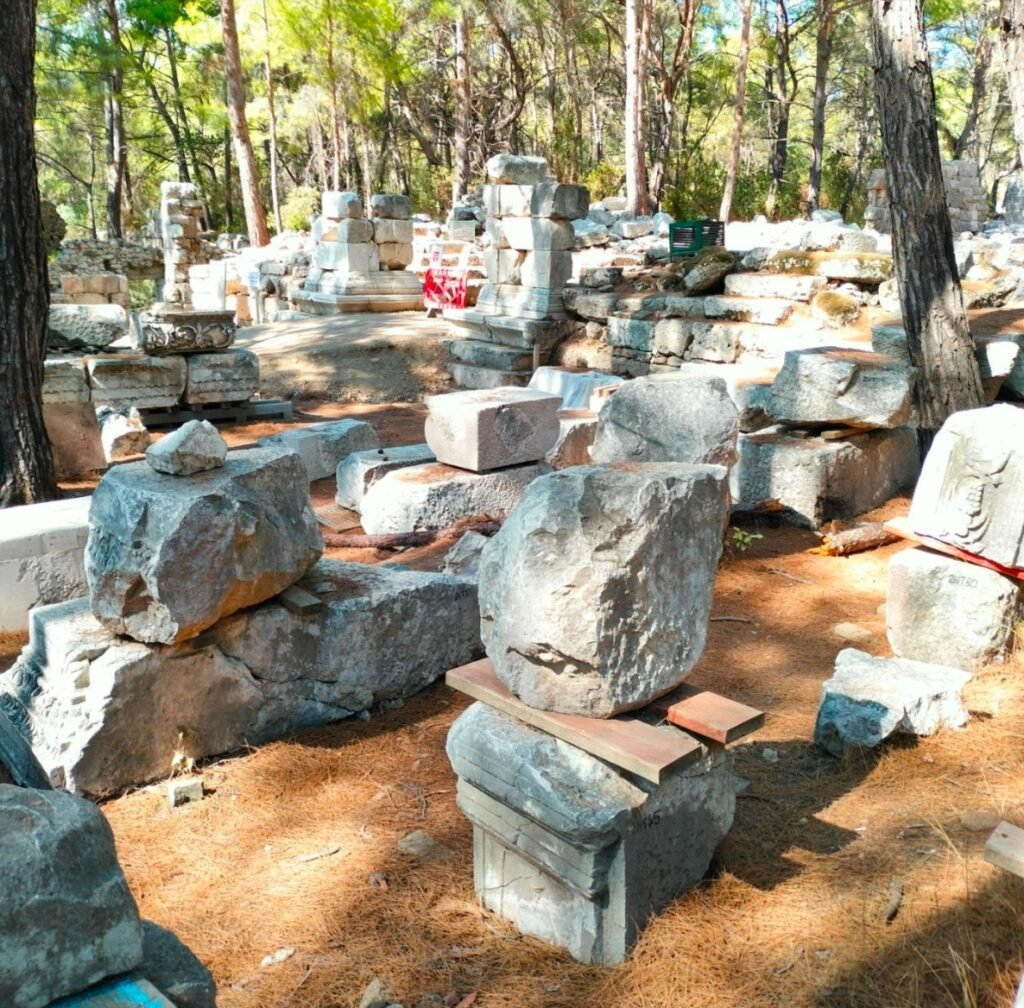
Reached Antalya, dropped off my luggage, and walked to the Antalya Museum. The first thing I did was buy a transportation card. Near the tram, I found these blue machines where I loaded 200 lira onto the card, which costs 35 lira, leaving 165 lira for fares.
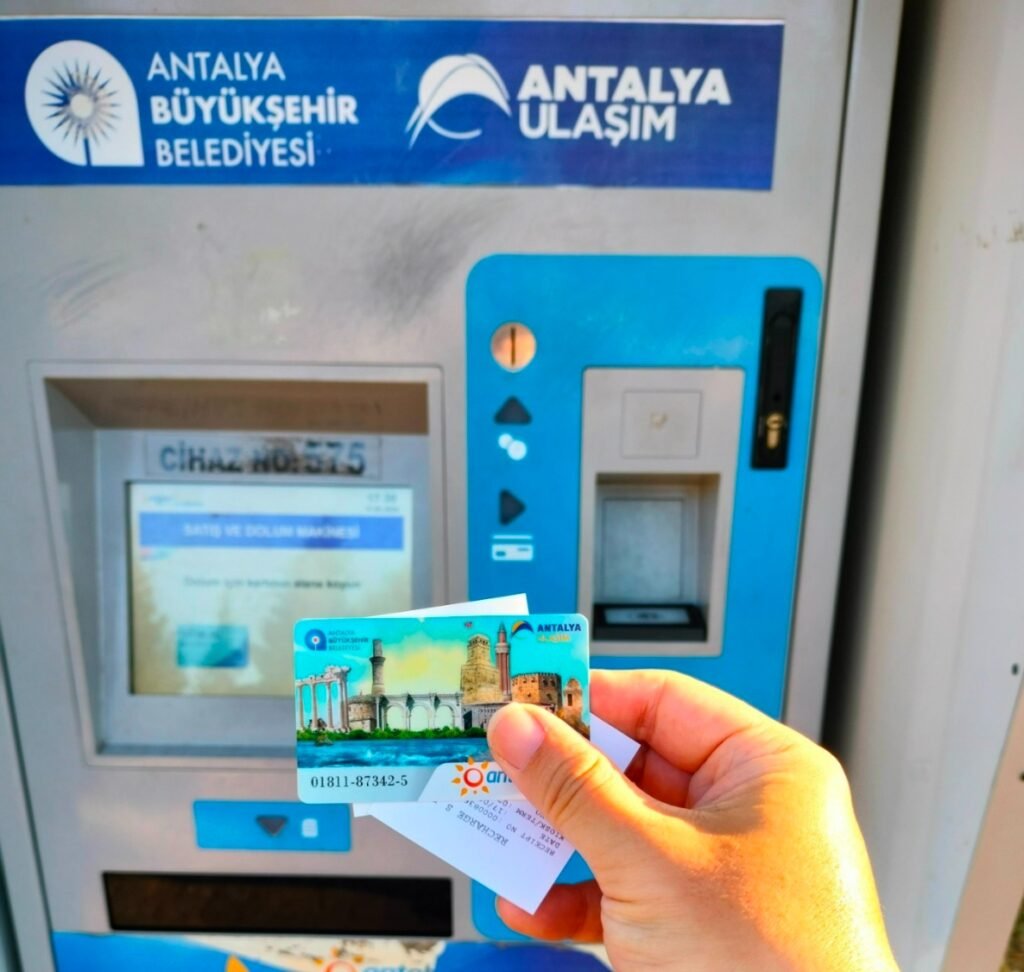
Arrived at Antalya Museum around 5 PM. It’s touted as a world-class museum, but it’s not very large.
The museum’s highlight is the Roman Dancer. There are tons of Roman-era sculptures here, mostly full-body statues that were originally decorations for various theaters. Many artifacts from the nearby Perge Ancient City have been moved here for centralized management.
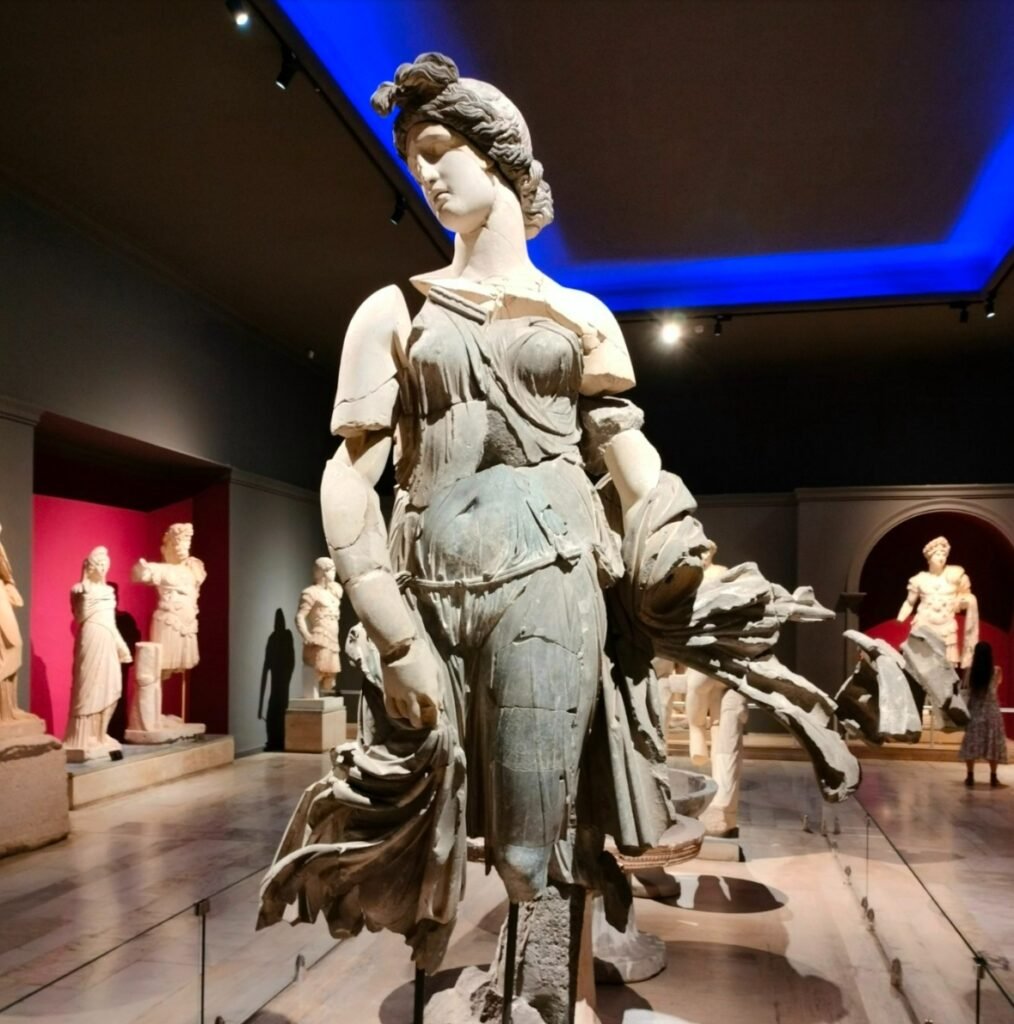

One hall was filled with sarcophagi, showcasing the exquisite craftsmanship from 2000 years ago. It’s humbling and reminds you to stay modest and avoid arrogant ignorance.

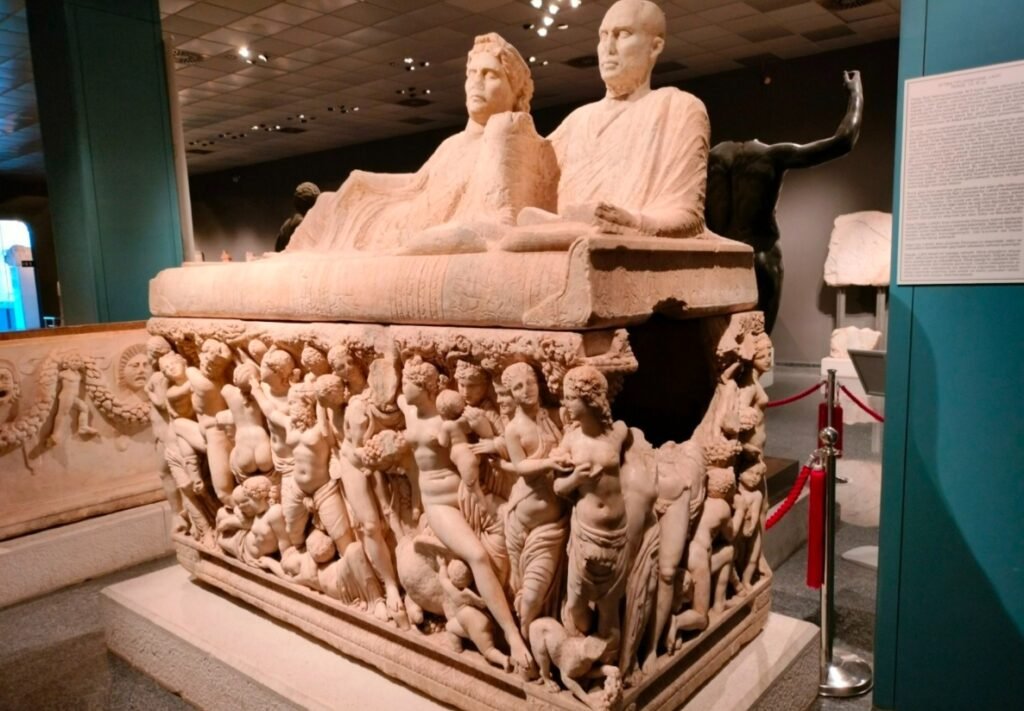
Another exhibition room was entirely dedicated to ancient coins. A few of them were returned to Turkey by Americans who had stolen them originally. They’re considered treasures of the museum. I’m not an expert in antique appraisal, so I couldn’t appreciate their intricacies, but I was really interested in the tools used to make these ancient coins.


After leaving the museum, I crossed the street to catch a bus and took a detour to the old town to check out a clock tower built during the Byzantine era.
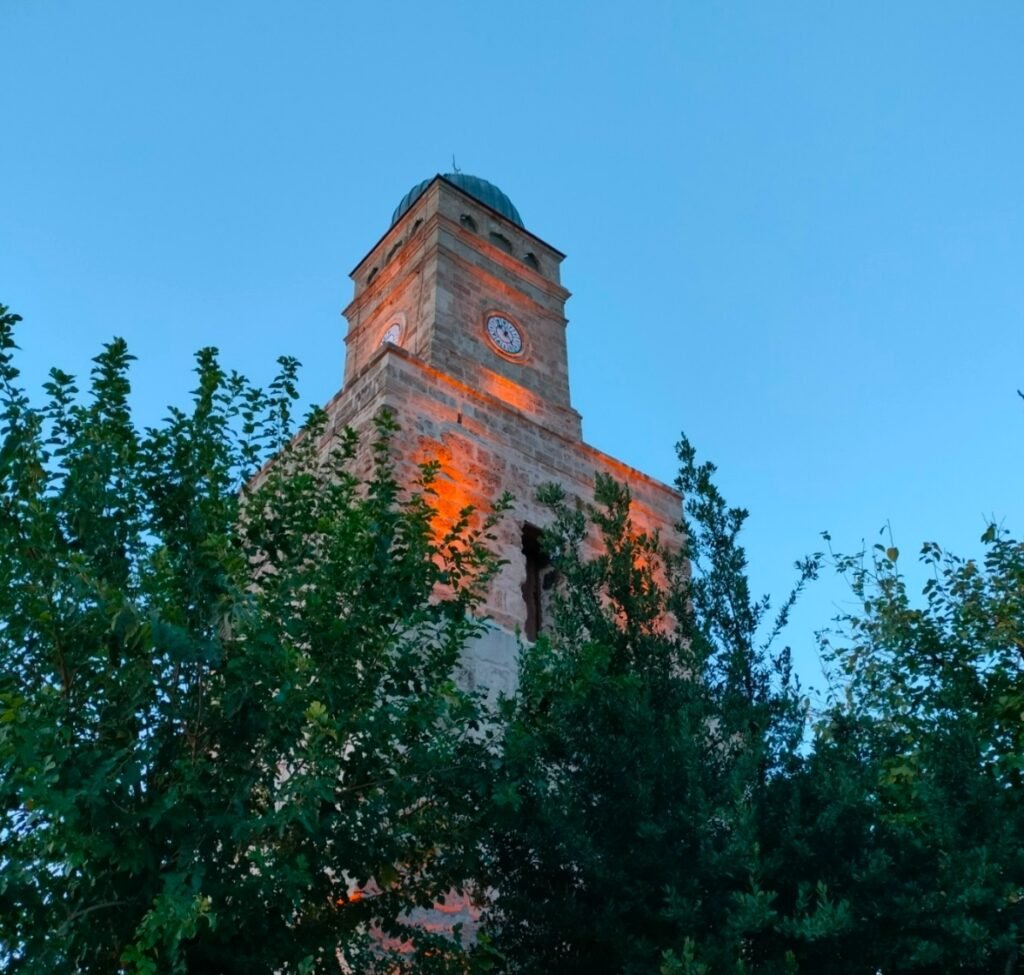

In the evening, enjoyed grilled lamb skewers with rice and flatbread in the old town.
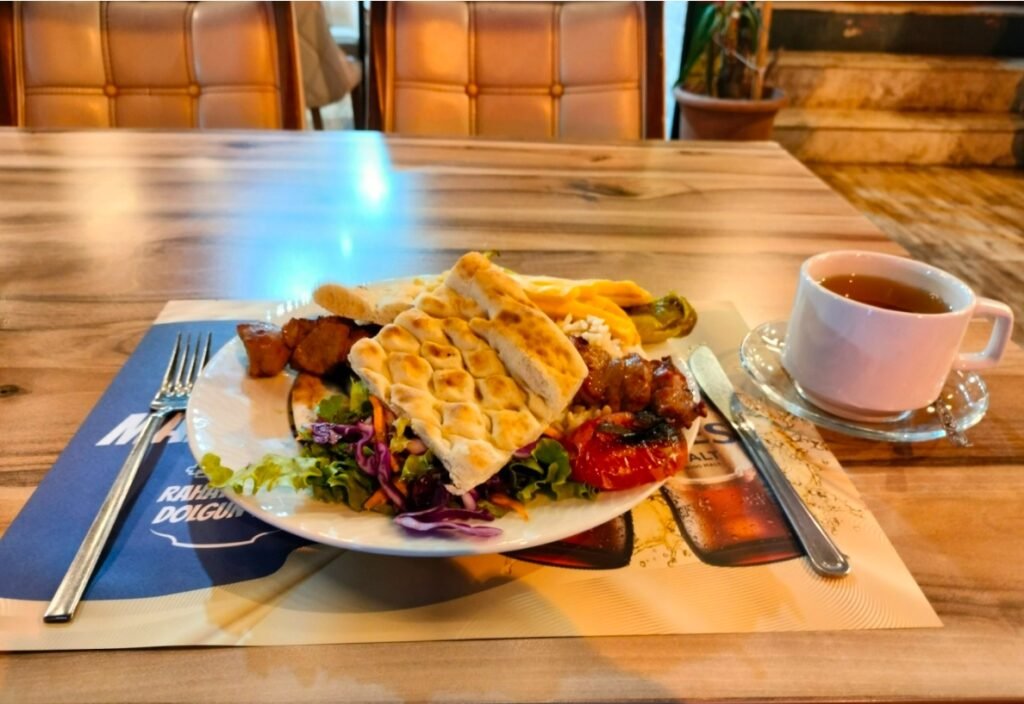
DAY5
Antalya — Göreme
Today’s itinerary: Aspendos, Antalya Long-distance Bus Station
When planning the trip, today was originally scheduled to visit historical sites in the morning, check out at noon, continue exploring the old town in the afternoon, and take a bus to Göreme in the evening. However, after traveling these past few days, I felt that the bright Turkish sun makes you sweat like crazy as soon as you step outside. To ensure I could rest well on the bus at night, I decided to return the rental car after visiting the historical sites in the morning, take a shower and check out at noon, go straight to the bus station, and find a convenience store to leisurely drink some black tea, organize my photos, and post them on social media.
Left the hotel at 7 AM, drove east along the highway. When the sun is behind you, it’s best to wear polarized sunglasses. At 8 AM, I was the first one to enter the Aspendos Roman Theater, where the echo effect is top-notch. When returning the car, following the directions in the rental app reviews, there was a noticeable blue sign after entering the airport road. Before returning the car, I washed it, filled up the gas tank, and handed over the official police report of the scratch to the rental company. The rental staff checked the car, everything was OK. They handed me an ACCIDENT INFORMATION form, and I briefly described the incident in English. After we both signed, I took some photos to complete the process (Next time I return a car, I’ll make sure to take pictures of the car’s condition and check the fuel gauge—remember that!). Took the bus back to the hotel, showered, and checked out. When I got to the bus station, I ran into problems: there are no convenience stores where you can rest! The roadside gas station convenience stores don’t have seats or charging ports. The coffee shops marked on the nearby map are either outdoors or closed, so after walking around the bus station for 40 minutes, I gave up and had to sit on a hard bench inside the station. On the long-distance bus, kids were crying, some people were smoking—it was impossible to get any rest. My experience is that it’s best not to take this bus to Göreme if you’re traveling on a budget.
The first time I entered the Aspendos Roman Theater, it wasn’t as grand as the ruins I visited before, like Miletus, but it was the best-preserved and restored.
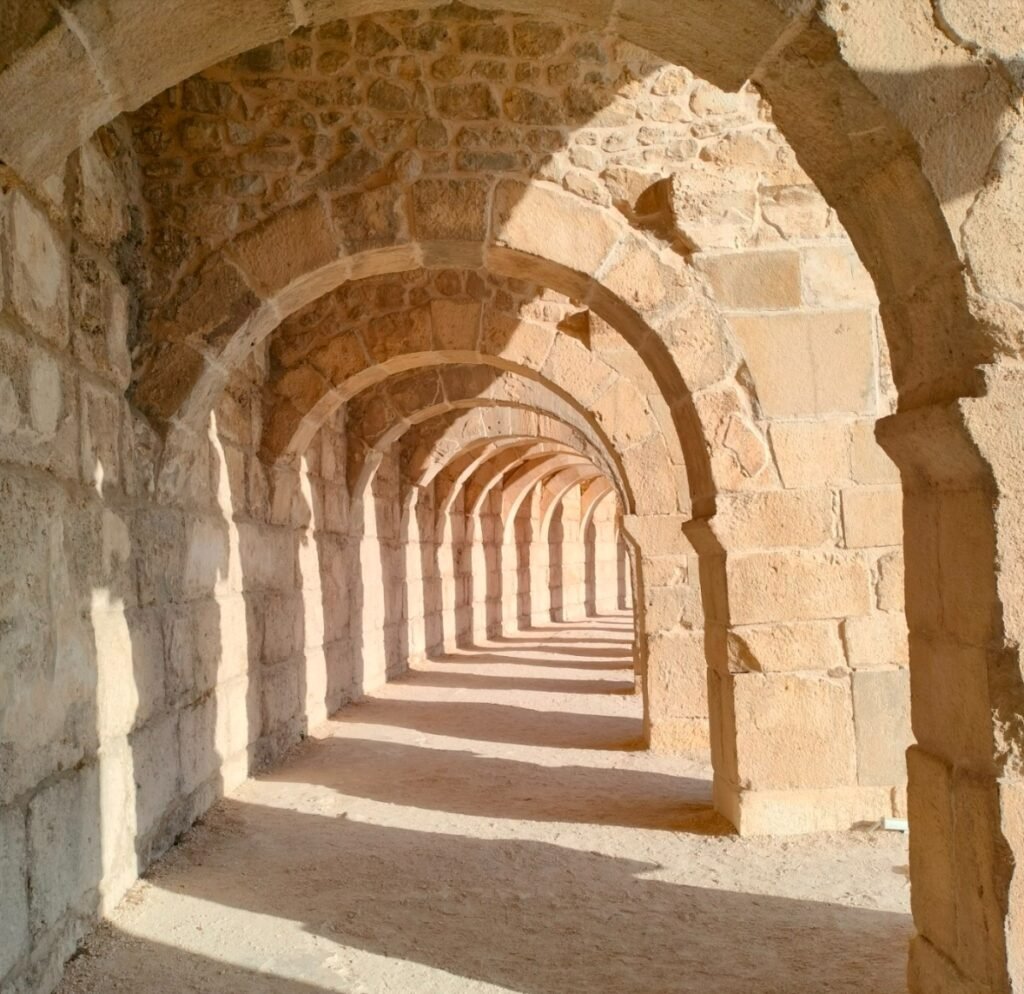
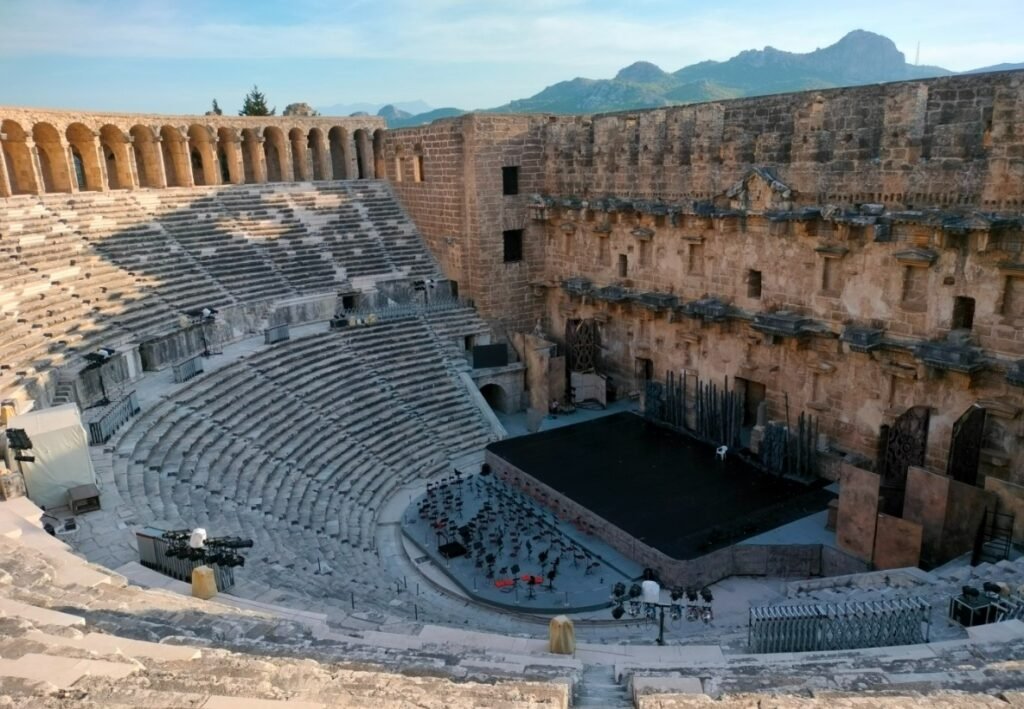
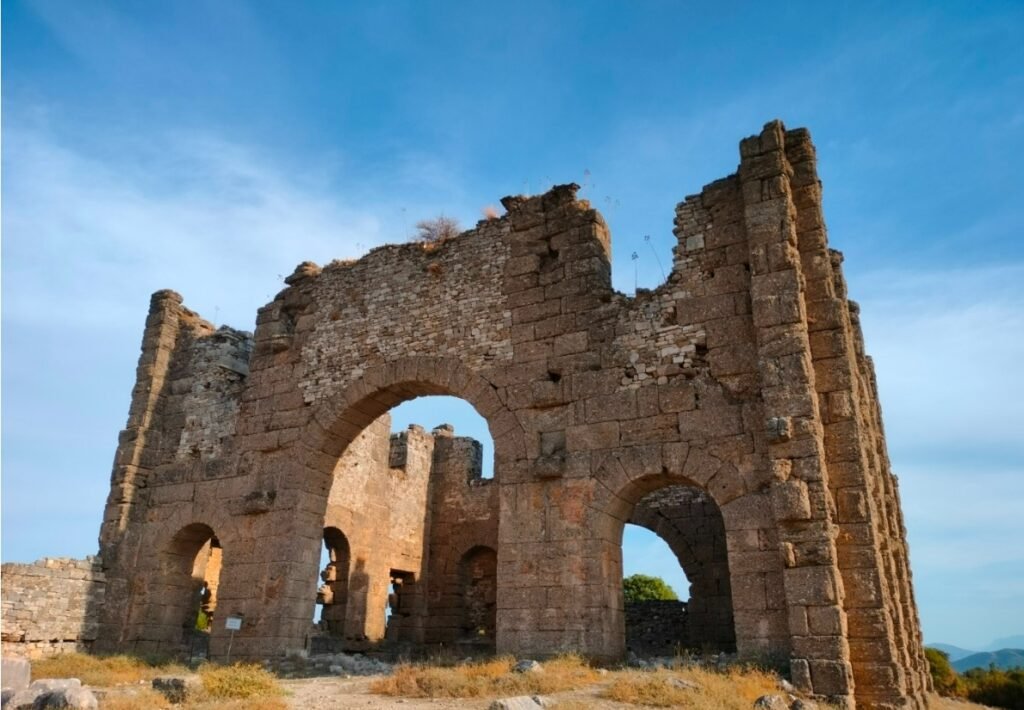
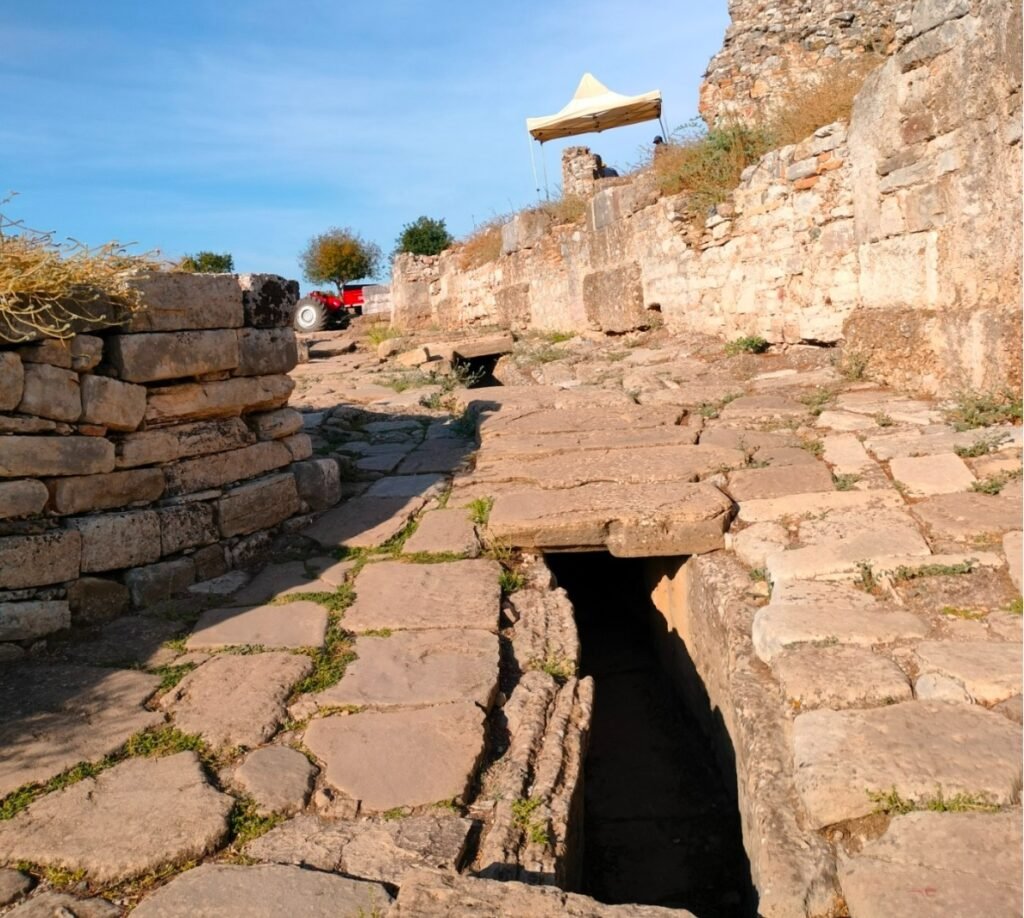
In front of the car return point, there’s this blue sign. Just go towards the RENT A CAR direction, don’t turn right.
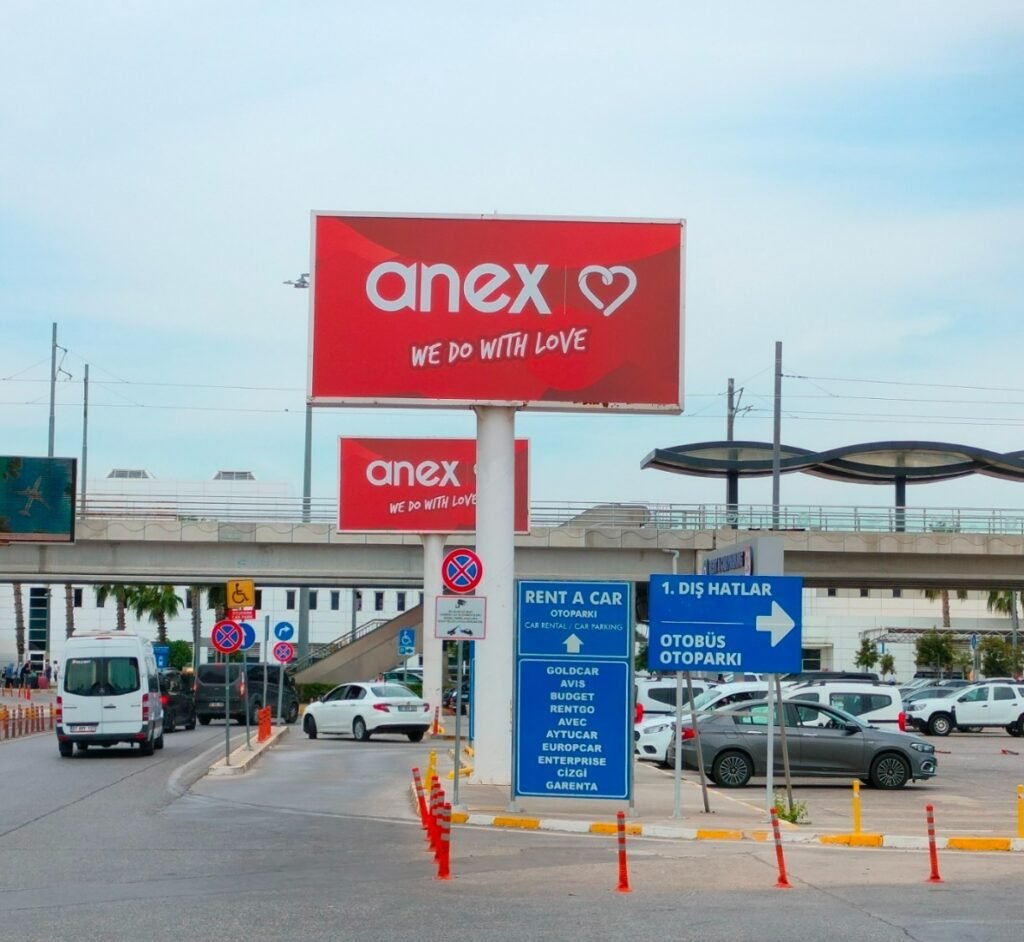
Antalya Bus Station.
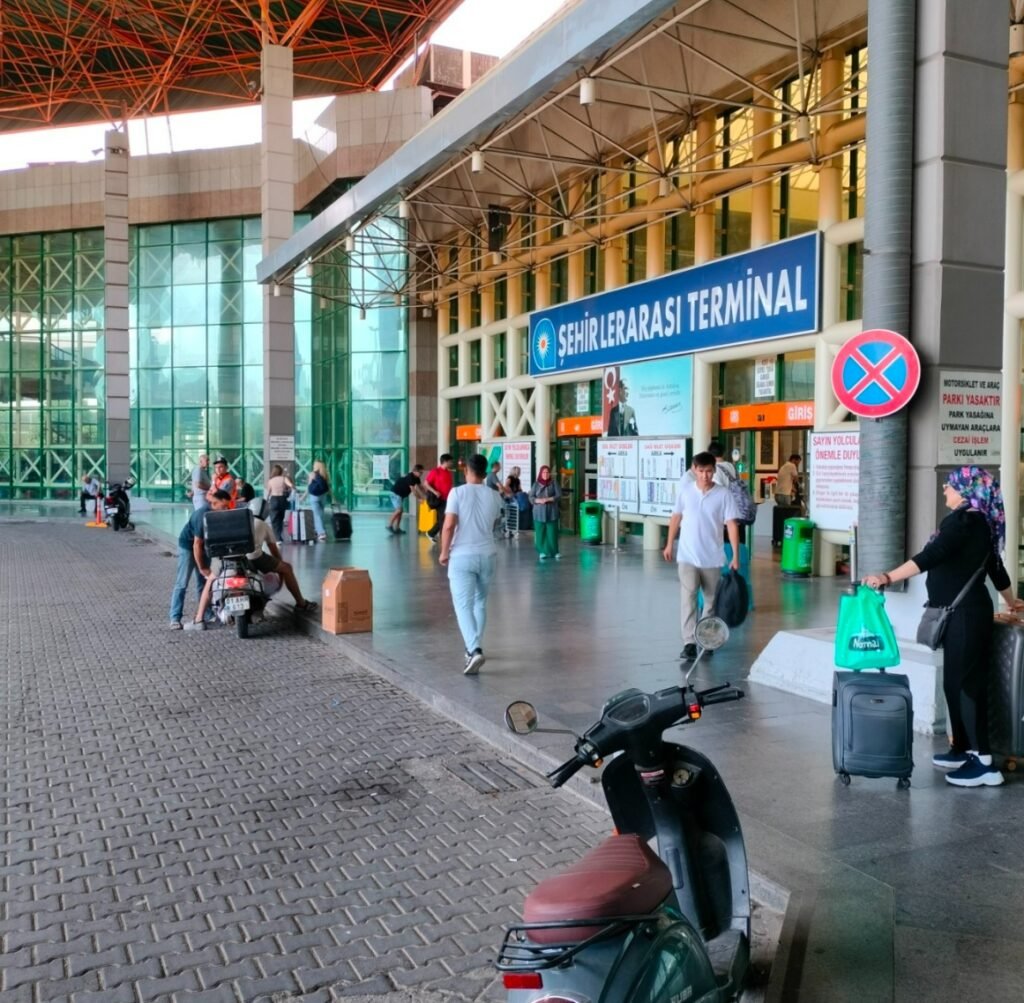
On the bus, they serve tea and snacks. They’re all Mercedes buses, and the seats are pretty comfortable.
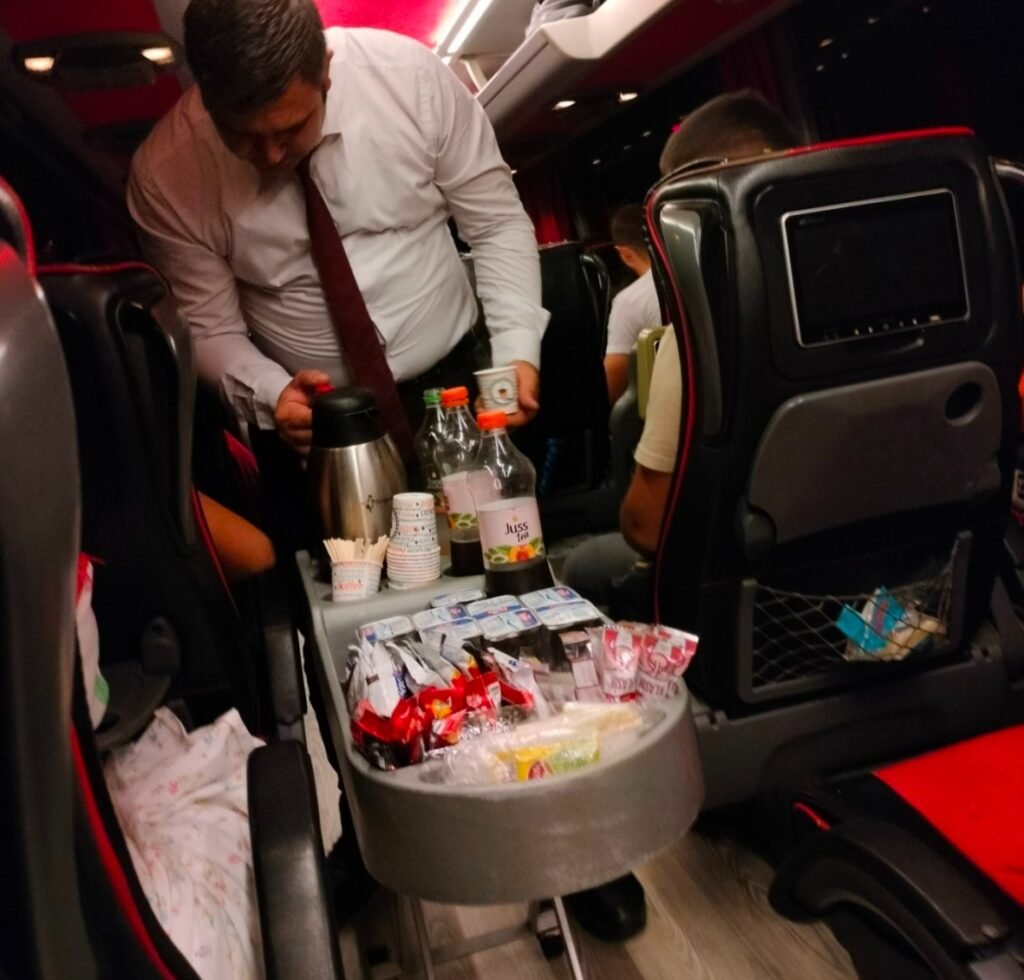
DAY6
Göreme — Uchisar
Today’s itinerary: Göreme Open-Air Museum, Uchisar Castle
Originally, I was supposed to catch the long-distance bus to Göreme at 8:30 AM, but the Turkish driver acted like a race car driver and got to the Göreme bus station in under 7 AM. I had booked the Goreme Palace Cave Hotel, which is a 5-minute walk from the bus station. Even though the Agoda listing mentioned a 24-hour front desk, when I arrived at 7 AM, there was nobody there. It was drizzling that morning, so I had to take shelter from the rain on the second-floor observation deck.
At 8 AM, a girl who was preparing breakfast came to the restaurant, saw me outside shivering in the cold wind, and kindly invited me inside to warm up. She even brought me a cup of black tea—it was warm in my mouth and my heart!
There was also an issue with the door number on Agoda, but luckily I met a Turkish person on the street. I showed him the hotel name, and he took me straight to the entrance. At 8:30 AM, the front desk guy officially started working and informed me that I could only check in after 1 PM. I dropped off my luggage and headed to the Göreme Open-Air Museum. Overall, I’m pretty happy with the hotel for my 3 days and 2 nights stay.


Göreme Open-Air Museum: Google Maps might have you driving in a big circle, but you don’t need to. Just follow the map boldly forward, follow the bus into the parking lot, and walk through various small markets to reach the main entrance of the Göreme Open-Air Museum.
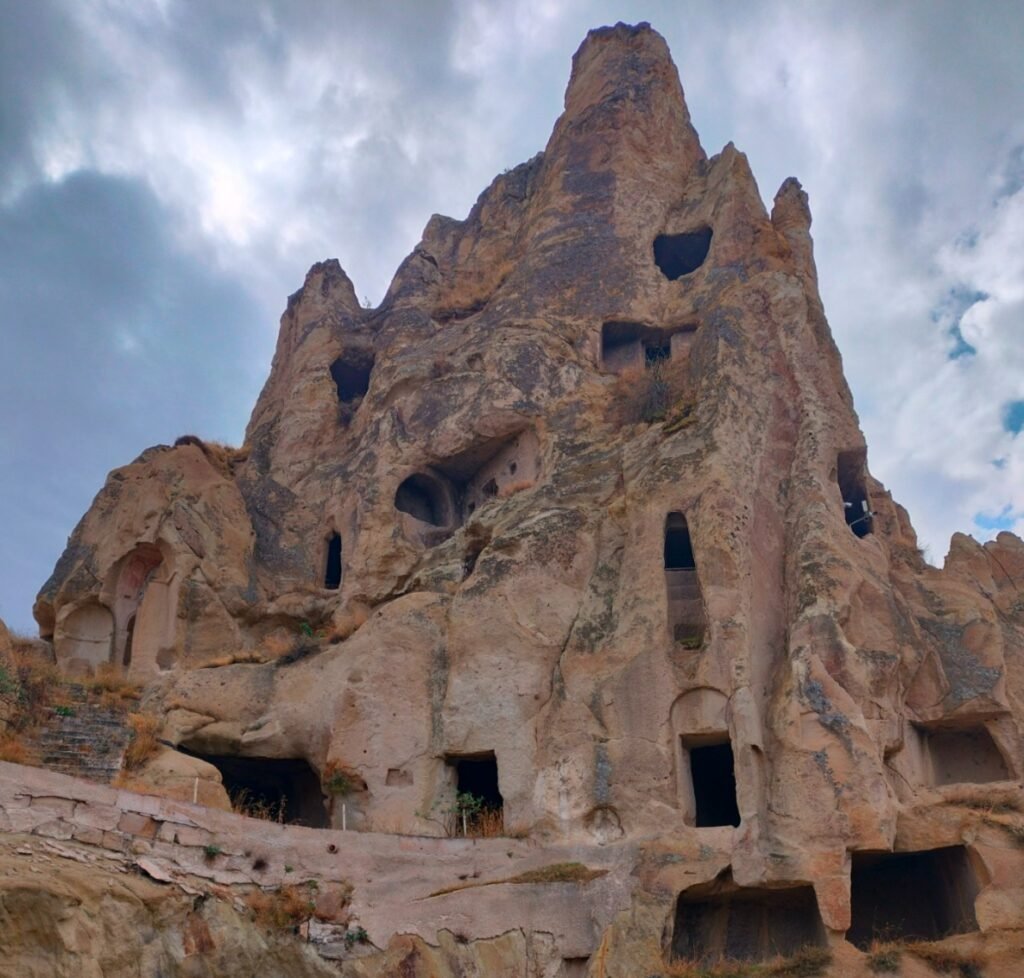

Churches and Monasteries: This place is filled with churches and monasteries carved into the rocks. Below are the monasteries’ dining halls, which are pretty minimalist. The Dark Church has an extra fee, but with the pass, you can go straight in. It was still early and not many people were visiting, so the Byzantine-style frescoes were gorgeous and elaborate.
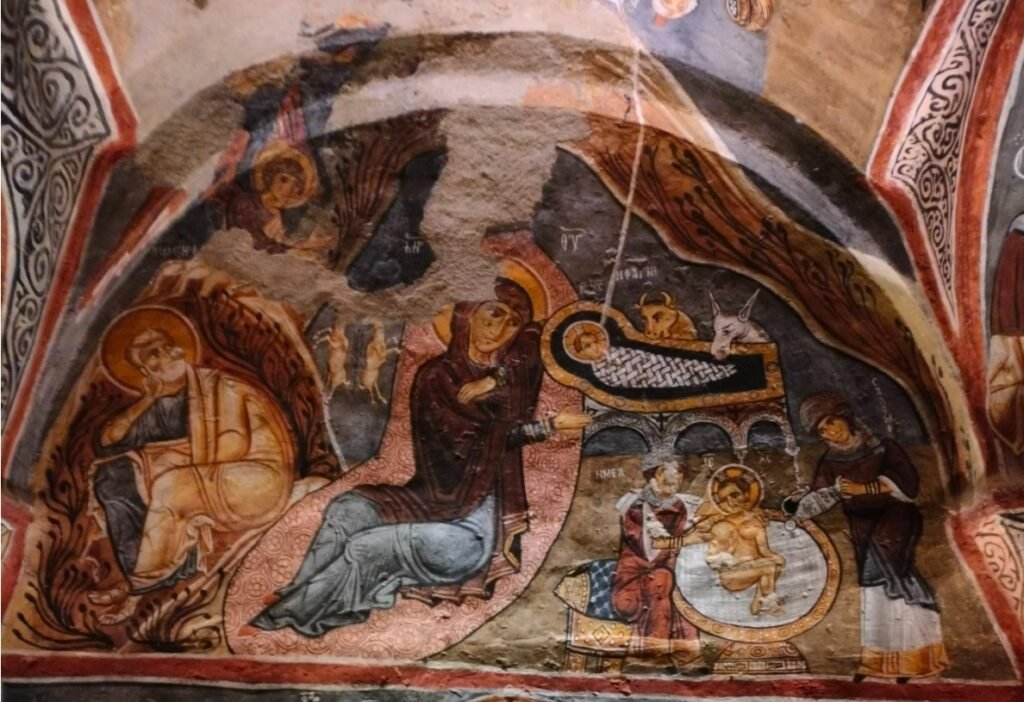
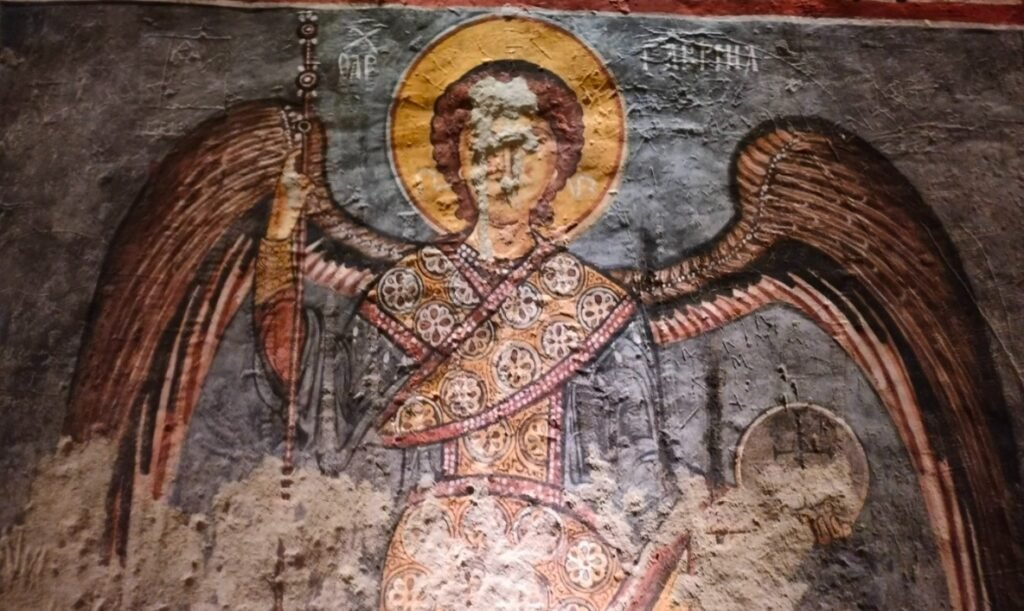

Back to Göreme Town: After leaving the museum, I went back to Göreme town and ate at an online-recommended restaurant that serves pottery kebab. They have three types: beef, chicken, and vegetables. I chose the beef one for sure—660 lira, plus a cup of Turkish coffee for 100 lira. The beef was super tender with some tomatoes, tasting really good. The Turkish coffee was a tiny cup, and the owner taught me to eat some Turkish delight first, then drink the coffee. The delight was like chewy caramel, not the best, and the coffee was like unfiltered espresso, which I wasn’t a big fan of.

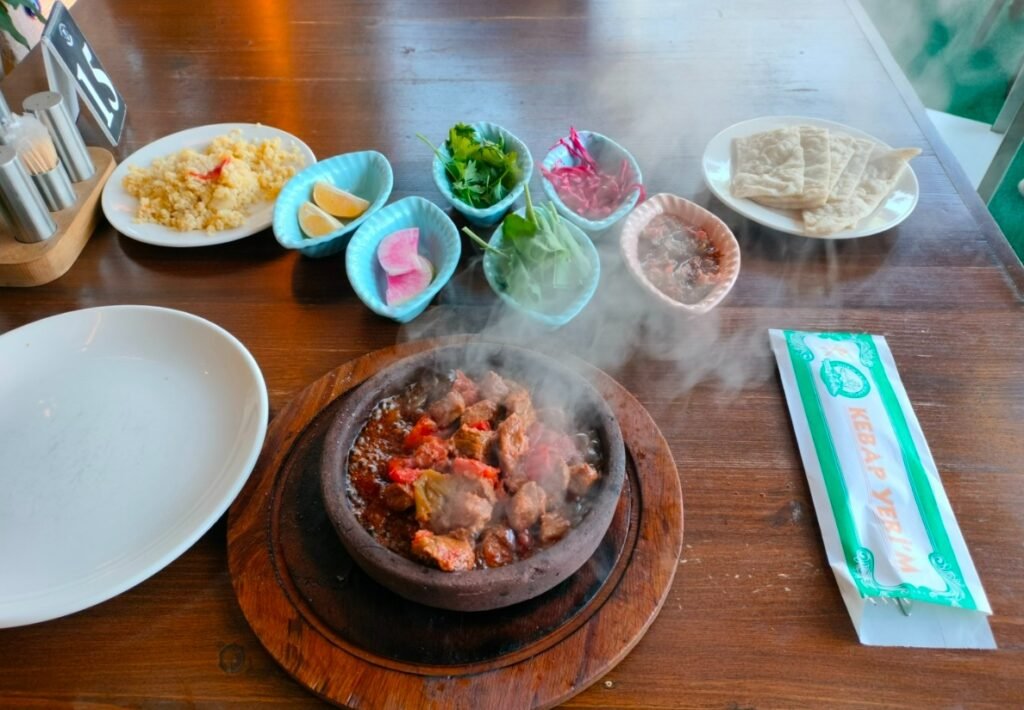
Checking into the Hotel: After eating, I went back to the hotel to finally check in and got a good night’s sleep. At 4 PM, I set off for Uchisar. I went straight to the Göreme bus station, and at the spot in my photo, there was a row of buses going to Uchisar and then to Nevşehir. They run every half hour, and the price is always 30 lira no matter where you’re going.
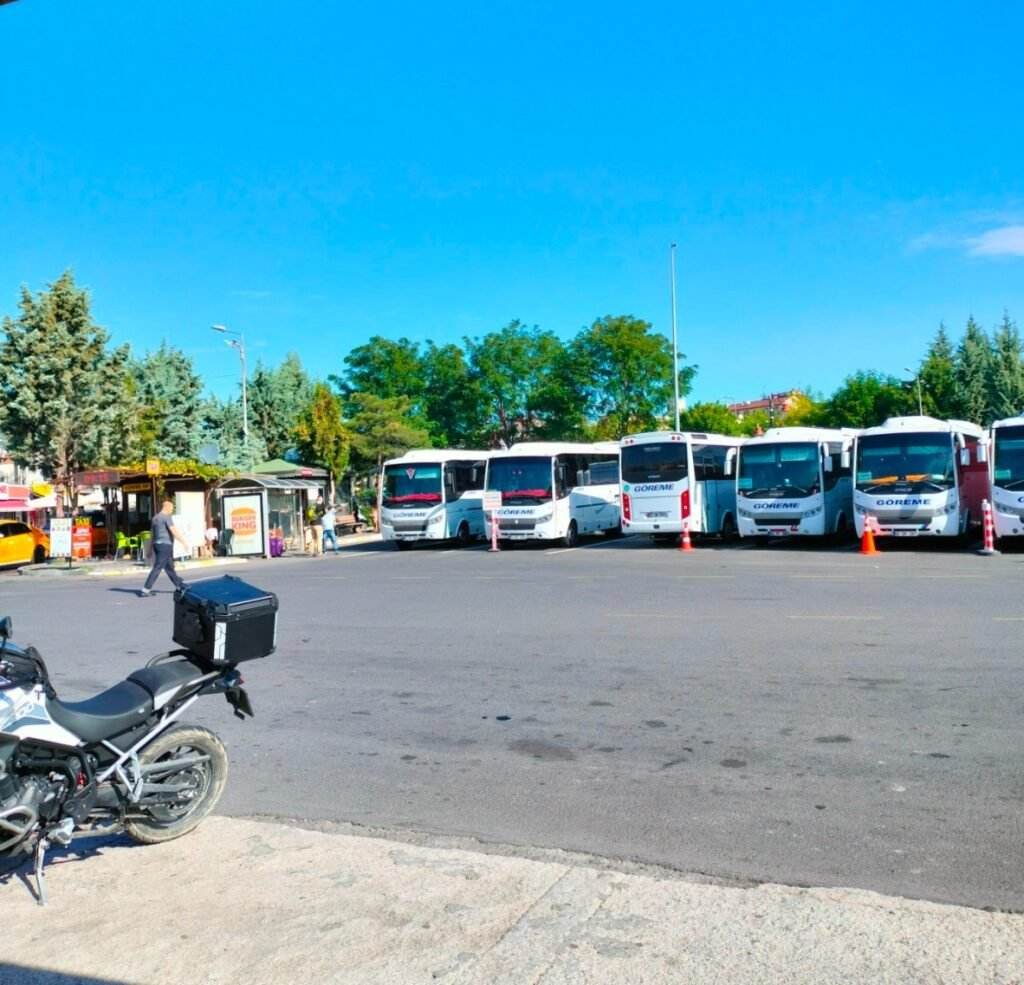
Uchisar Castle: You can’t use the pass here. Watching TikTok travel videos made me want to see the sunset, but I was too tired from looking at cave aesthetics early in the morning, so I didn’t go inside. There’s a vending machine at the entrance that sells souvenir coins, but a Korean couple and I couldn’t figure out how to use it. When we asked the ticket seller, he just raised his hand and showed us a line of English on his phone: “Don’t ask me, I don’t know either.”

Back to Göreme: I grabbed a wrap for 220 lira. A Turkish friend told me that this wrap is different from the ones I had in Istanbul. In Istanbul, they have roasted beef slices inside, but this one has stir-fried beef strips. I actually thought the taste was better.

DAY7
Kaymakli Underground City, Derinkuyu Underground City, Rose Valley
I was woken up at 6 AM by the sound of hot air balloons shooting fire outside the window. I opened the window—it was truly beautiful! I climbed to the hotel rooftop to watch the hot air balloons; seeing them fill the sky was absolutely stunning.

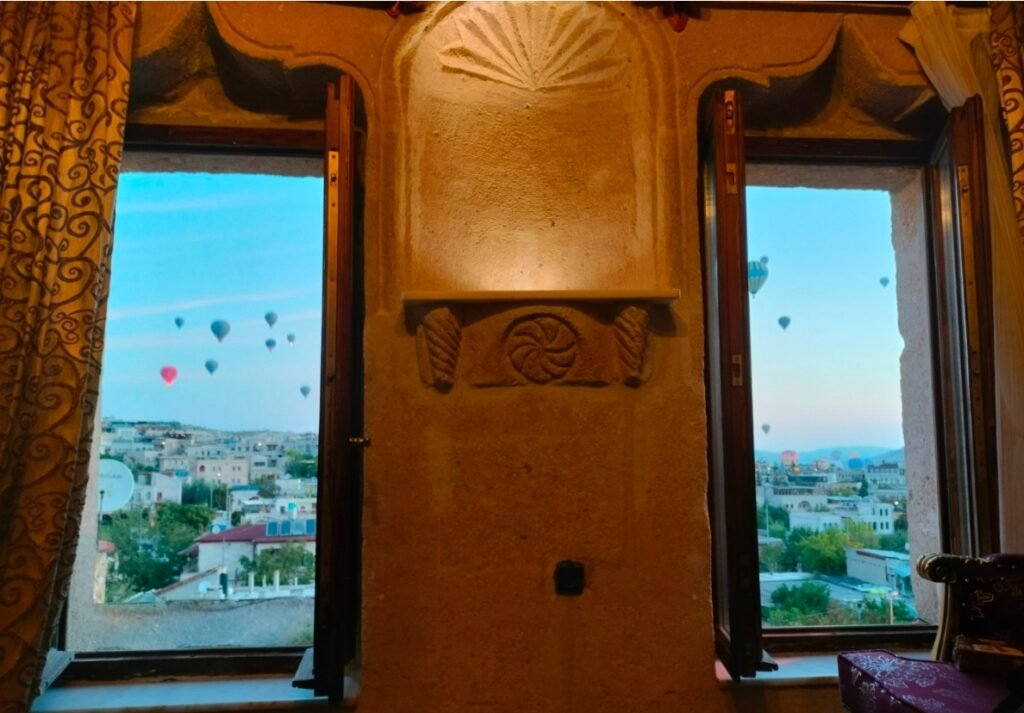
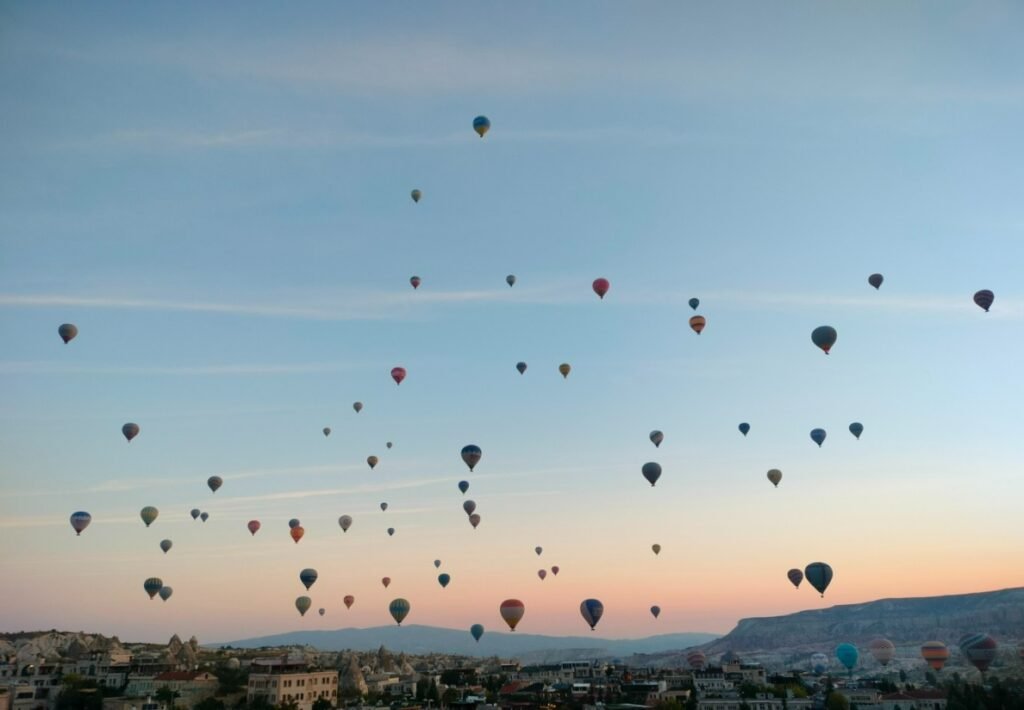

After breakfast, I set off for the underground city. I took a bus to Nevşehir. You tell the driver you’re going to the underground city, and when you reach the stop, he’ll ask you to get off. Crossing to the other side of the street, you’ll find the bus to Kaymakli Underground City.
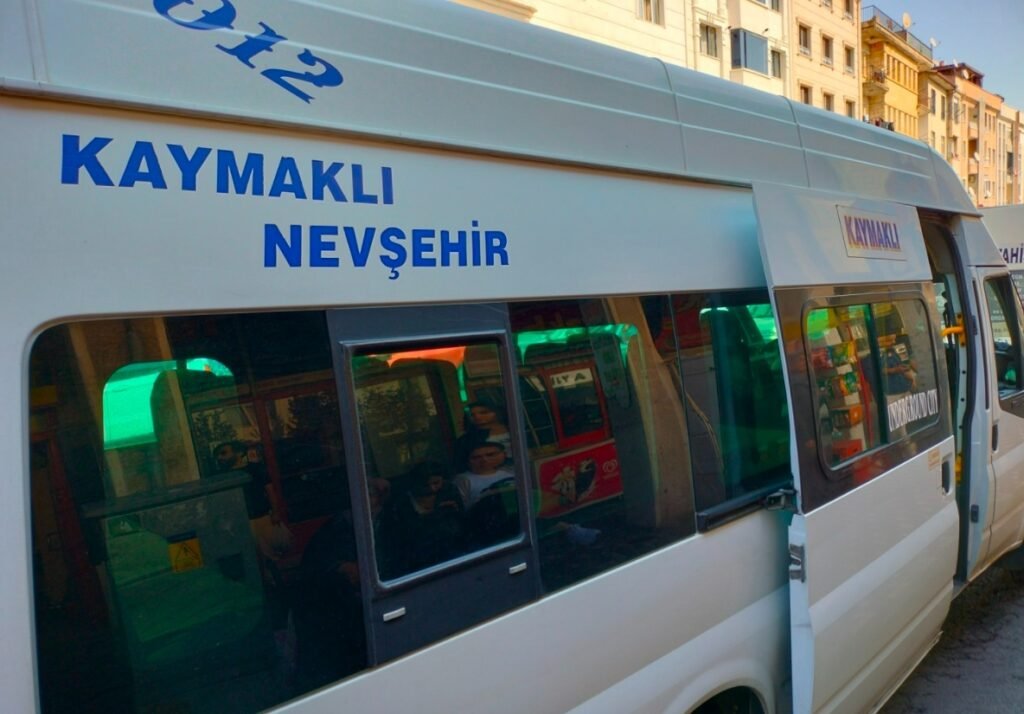
Upon arriving at the underground city, the pass was valid. This was the only museum on this trip where you had to pay 10 lira to use the restroom.
There wasn’t much to photograph in the underground city. It was an experience to witness the harsh lives of the locals who had to escape persecution by Romans, Arabs, and Turks. The paths were narrow, and in many places, you had to bend down to pass through. There was no modern lighting or ventilation—just thinking about it was heartbreaking.
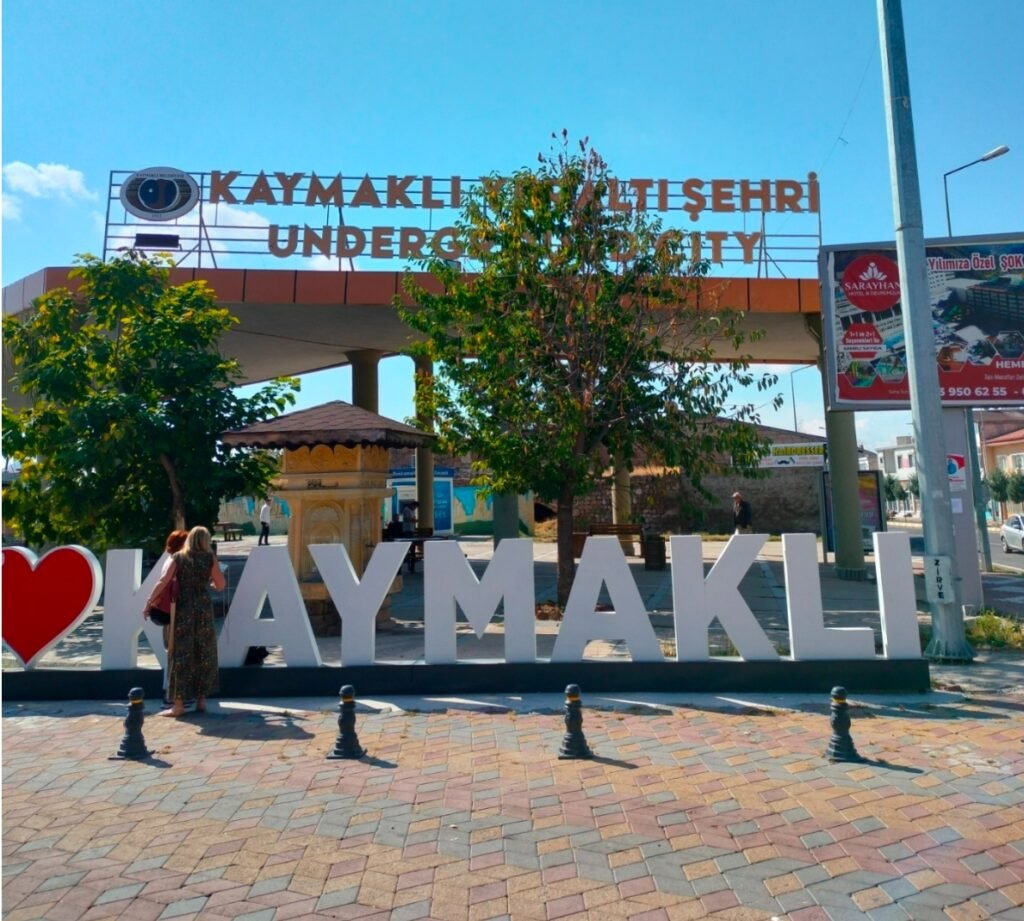
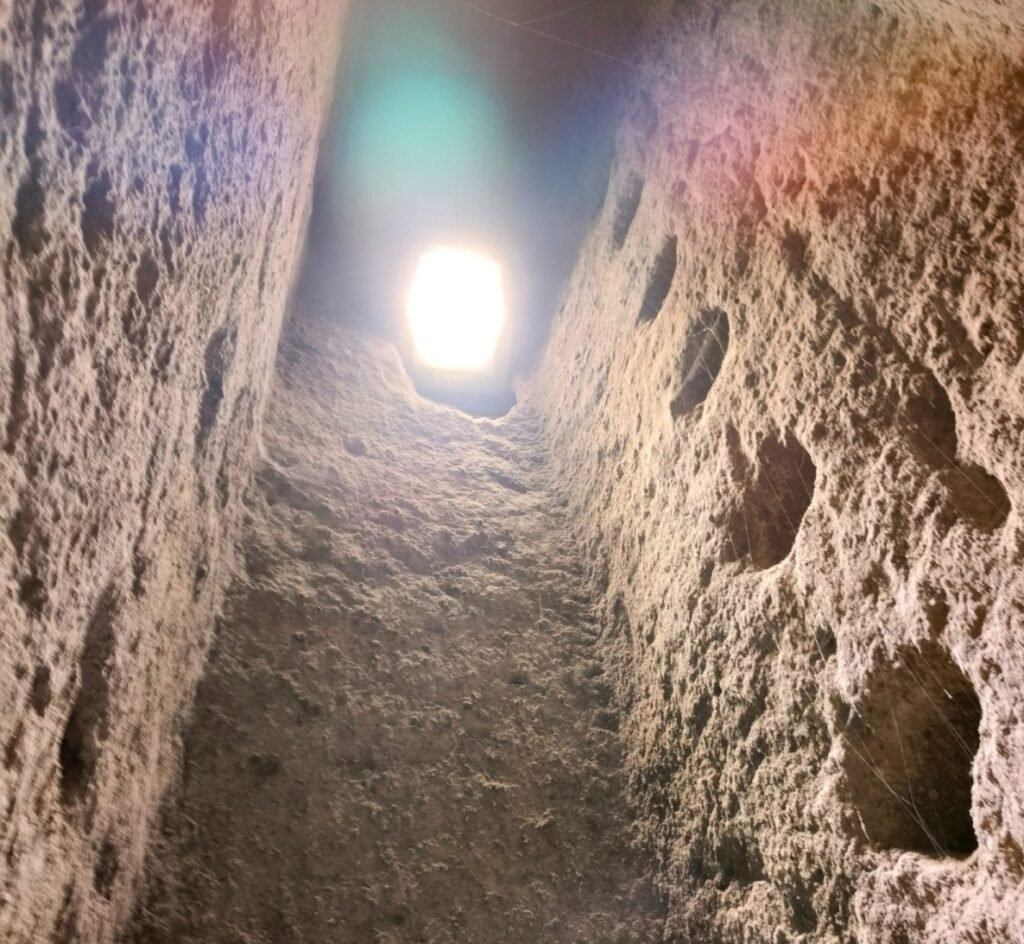
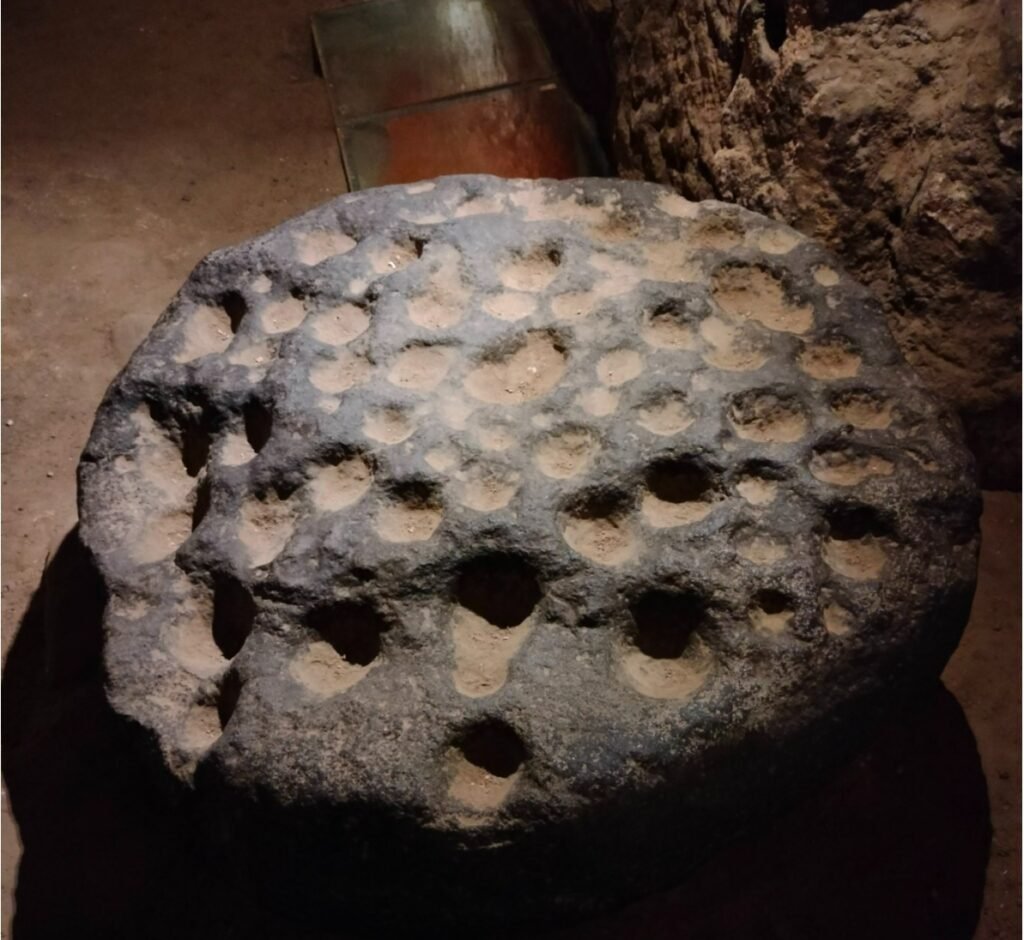
At the stop where I got off earlier, I waited for the bus to Derinkuyu Underground City. The fare was either 40 or 50 lira—I can’t remember. Walking towards the underground city, you pass by Derinkuyu Church, which is a Roman-style building in a closed state. It seemed like it hadn’t been abandoned for too long, and it was relatively well-preserved.
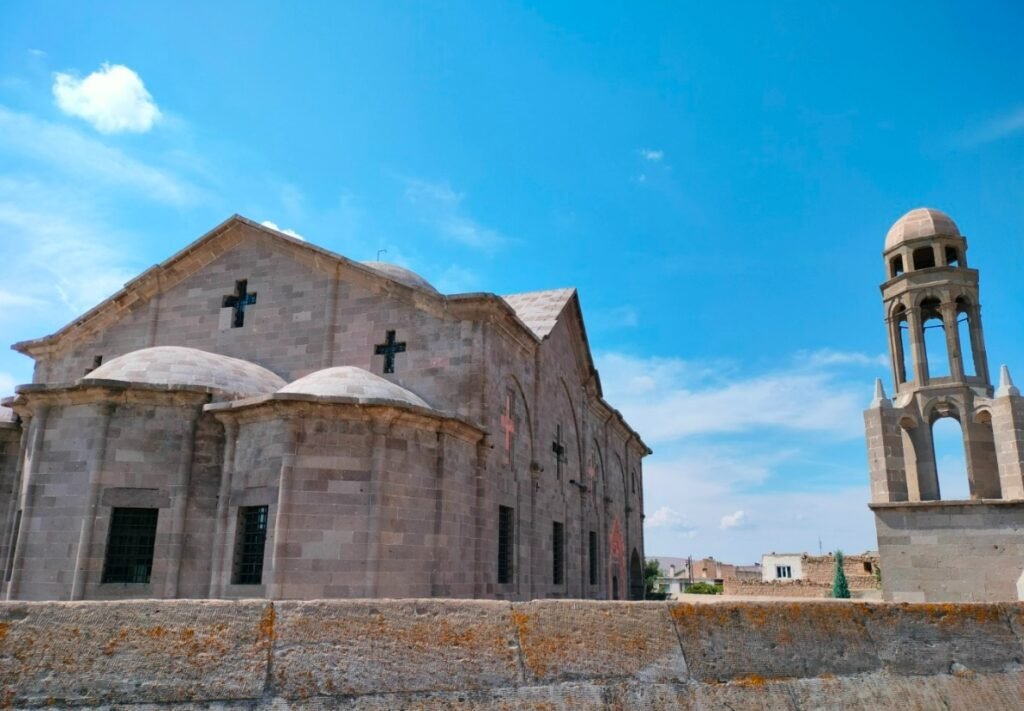

The pass was also valid for Derinkuyu Underground City, which is larger overall than Kaymakli Underground City and feels more professionally built in terms of space. It goes deeper underground as well. In Göreme, tour groups on the green line usually take you to Kaymakli Underground City because it’s closer. If you’re traveling independently and just want to experience an underground city, I recommend visiting Derinkuyu Underground City.




